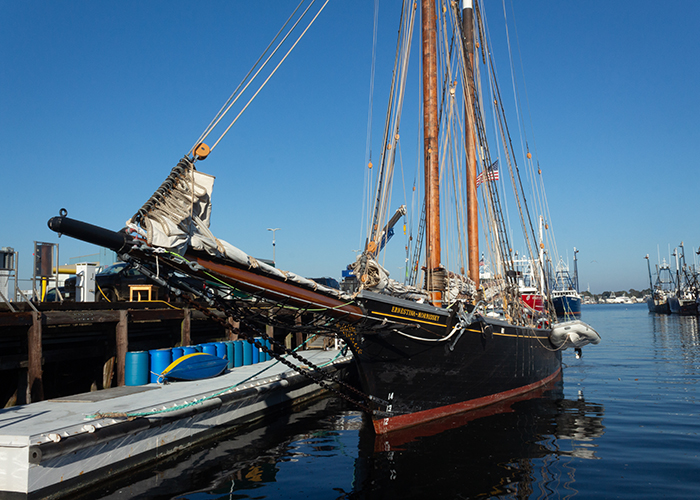 Previous Day |
Waltham, MA → New Bedford, MA → Waltham, MA 159.0 mi (255.9 km) |
 Next Day |
Call me Bill, everyone!
Today, I’m sailing south to the bottom bits of Massachusetts in pursuit of a few whale-sized tales! As time goes by, you see ,the line between fact and fiction can get a little blurry, but that doesn’t make the stories any less exciting! Come along, and you’ll see what I mean.
My first stop on the day’s journey was in front of an inn that no longer exists, with a sign that’s kind of hogwash! This, folks, was the Toll House Inn of Whitman, Massachusetts: birthplace of the chocolate chip cookie! Though the sign proudly states “Toll House,” it was never a toll house, and though it proudly says “1709,” it was actually built in 1817. Nevertheless, Ruth Wakefield was an honest-to-gosh real person in 1938, who made a wicked good Butter Drop Do cookie then experimented by breaking up bits of chocolate over it! Folks loved these chocolate chip cookies so much that she sold the recipe to Nestlé in exchange for a lifetime supply of chocolate!
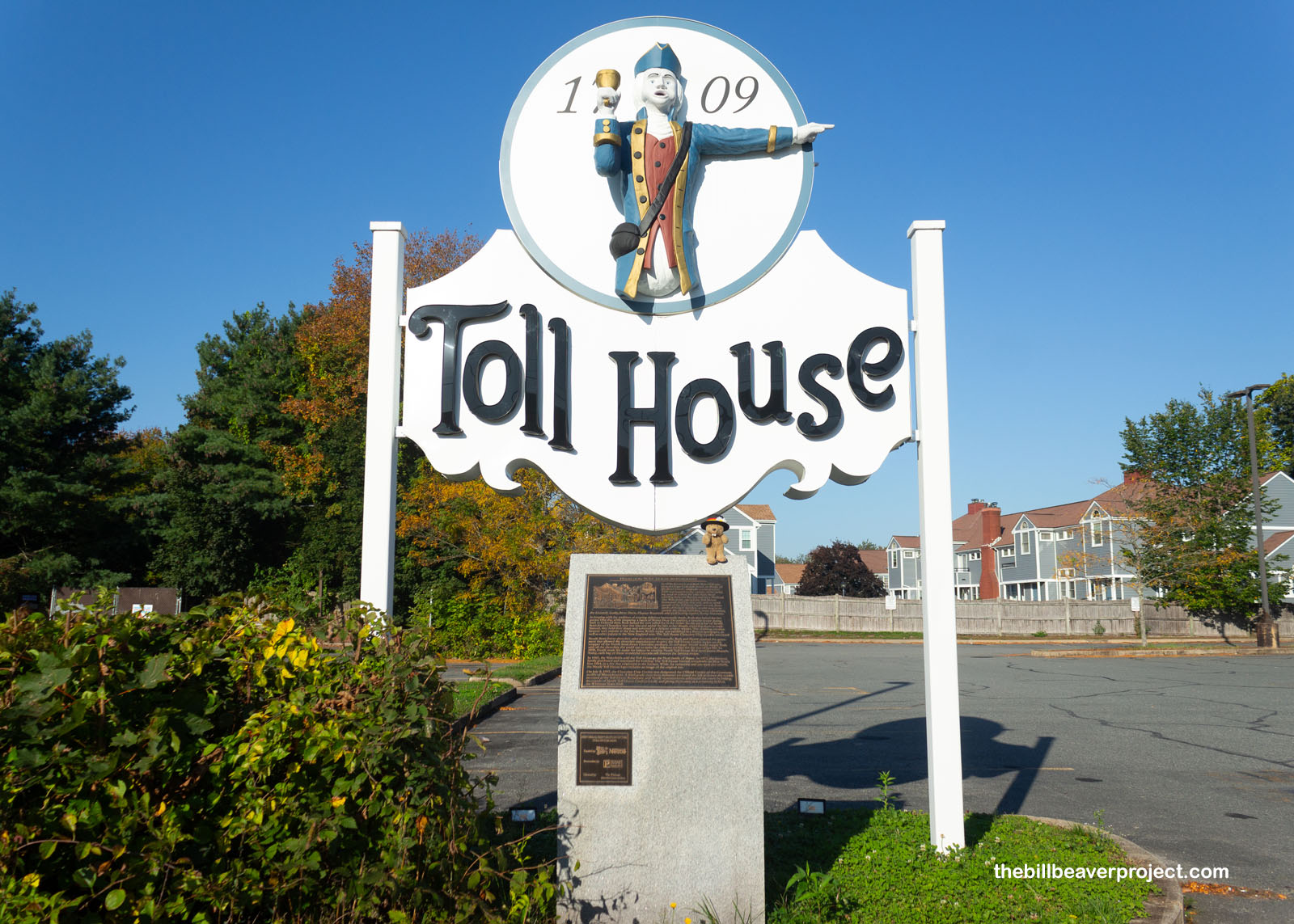 |
A little further to the southeast of Whitman stood another paragon of American history-lore, one so grand that practically every school-kid knows it by name. Since 1921, it’s been tucked away under a Greg-Roman style portico, which itself is on the National Register of Historic Places! Like a box of cookies, I hustled over to see just what was inside this fancy packaging!
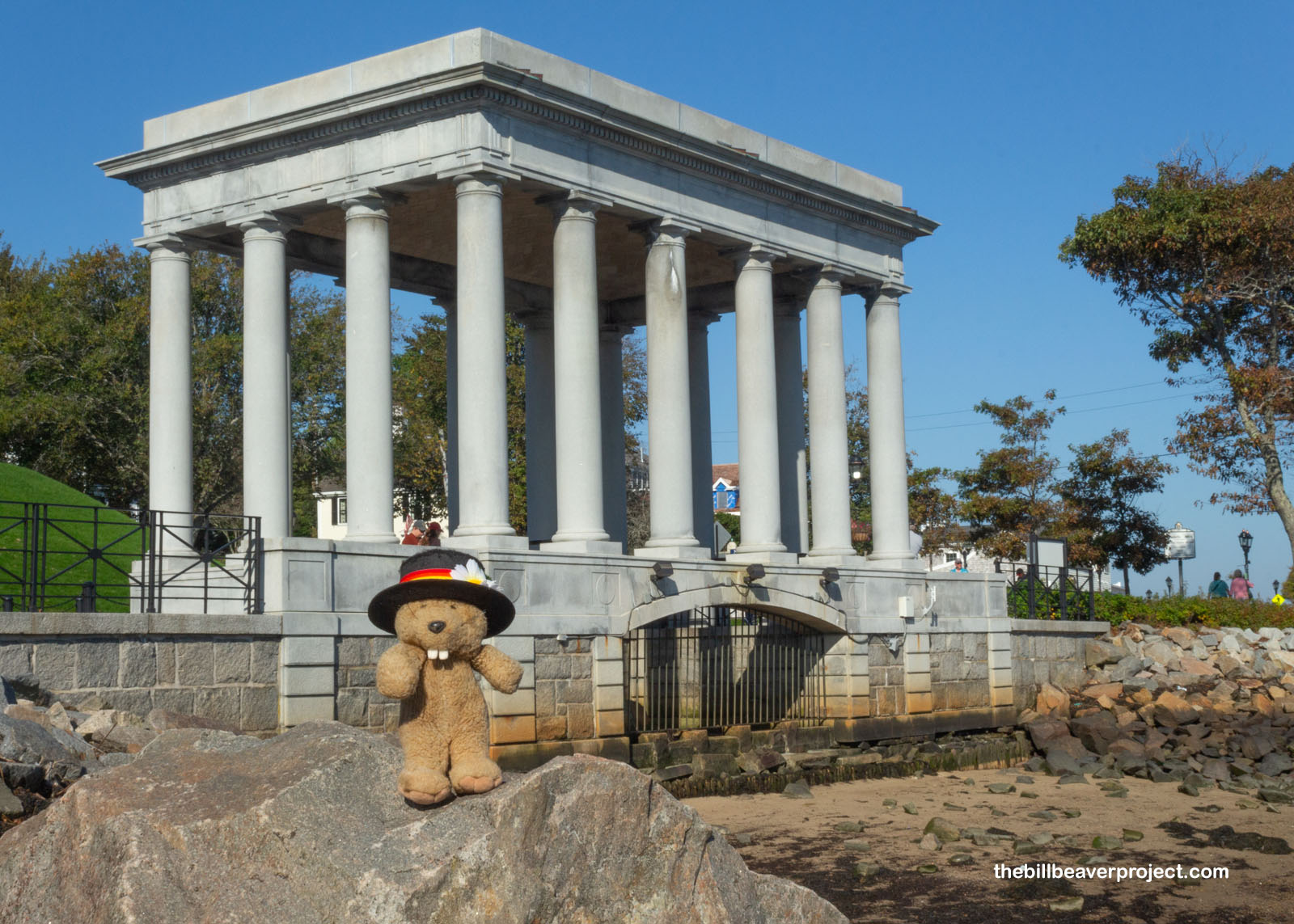 |
Yes folks, down beneath this monument sat a huge Dedham granite boulder with a patched up cut down the middle and “1620” carved onto the right half. I’m talking, of course, about Plymouth Rock, the traditional landing spot of the Pilgrims in December of that year! After all this time, the waves are still washing over it, as they’ve washed away most of what we know of it! The only one to assert that it was, in fact, the original Plymouth Rock, was 94-year old Thomas Faunce, who spoke out against building a wharf over it in 1741! His dad, who came here in 1623, assured him that it was indeed this rock where the Pilgrims landed!
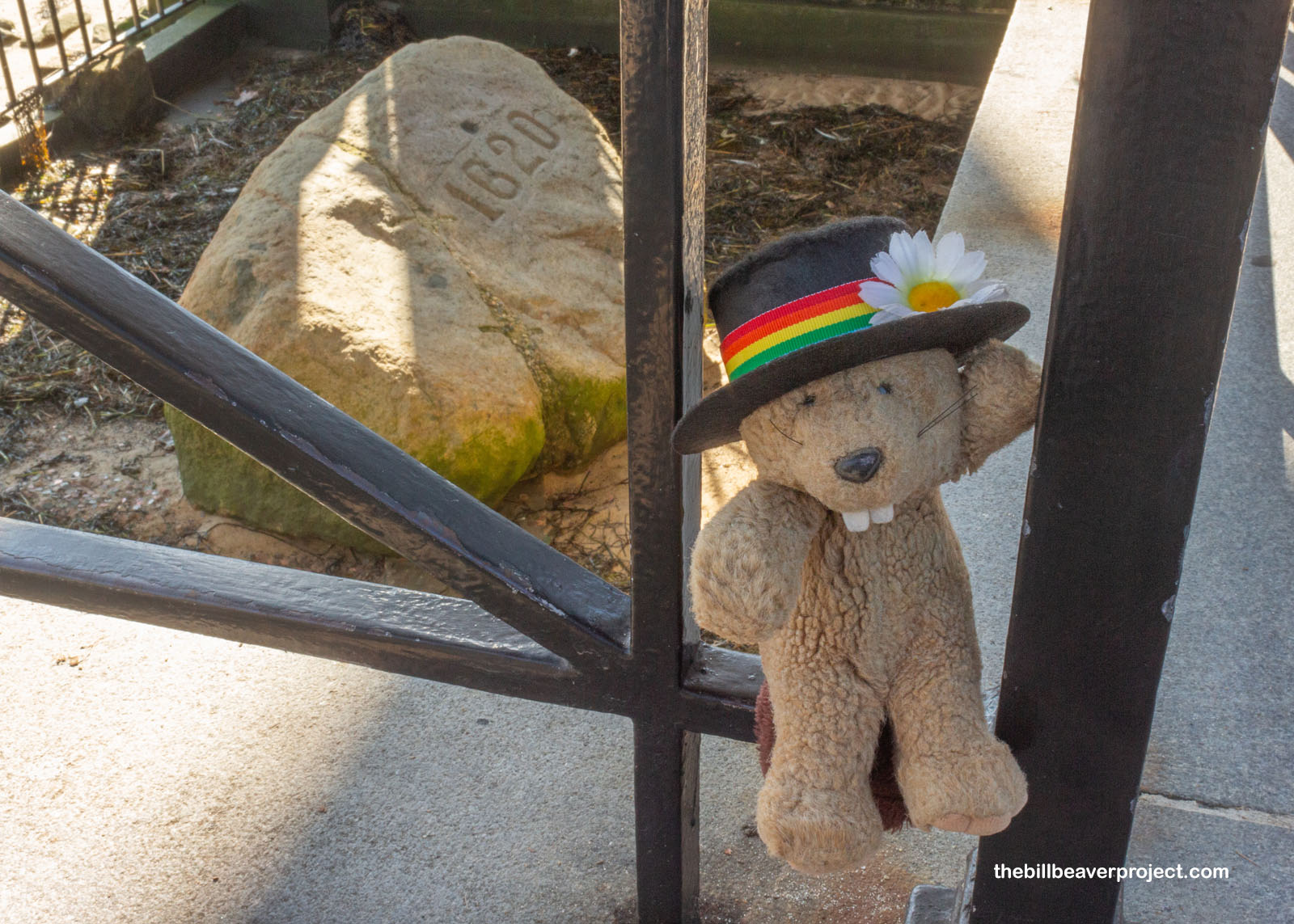 |
What makes it suspect is that William Bradford, founder of this first colony of “Plimouth,” was a detailed note taker, and he left behind no notes at all regarding special rocks! I suppose he was too busy at the time figuring out how to keep the crew of 102 alive in the freezing winter and to fend off a mutiny! Under his leadership was signed the Mayflower Compact, from which grew America’s system of representative government!
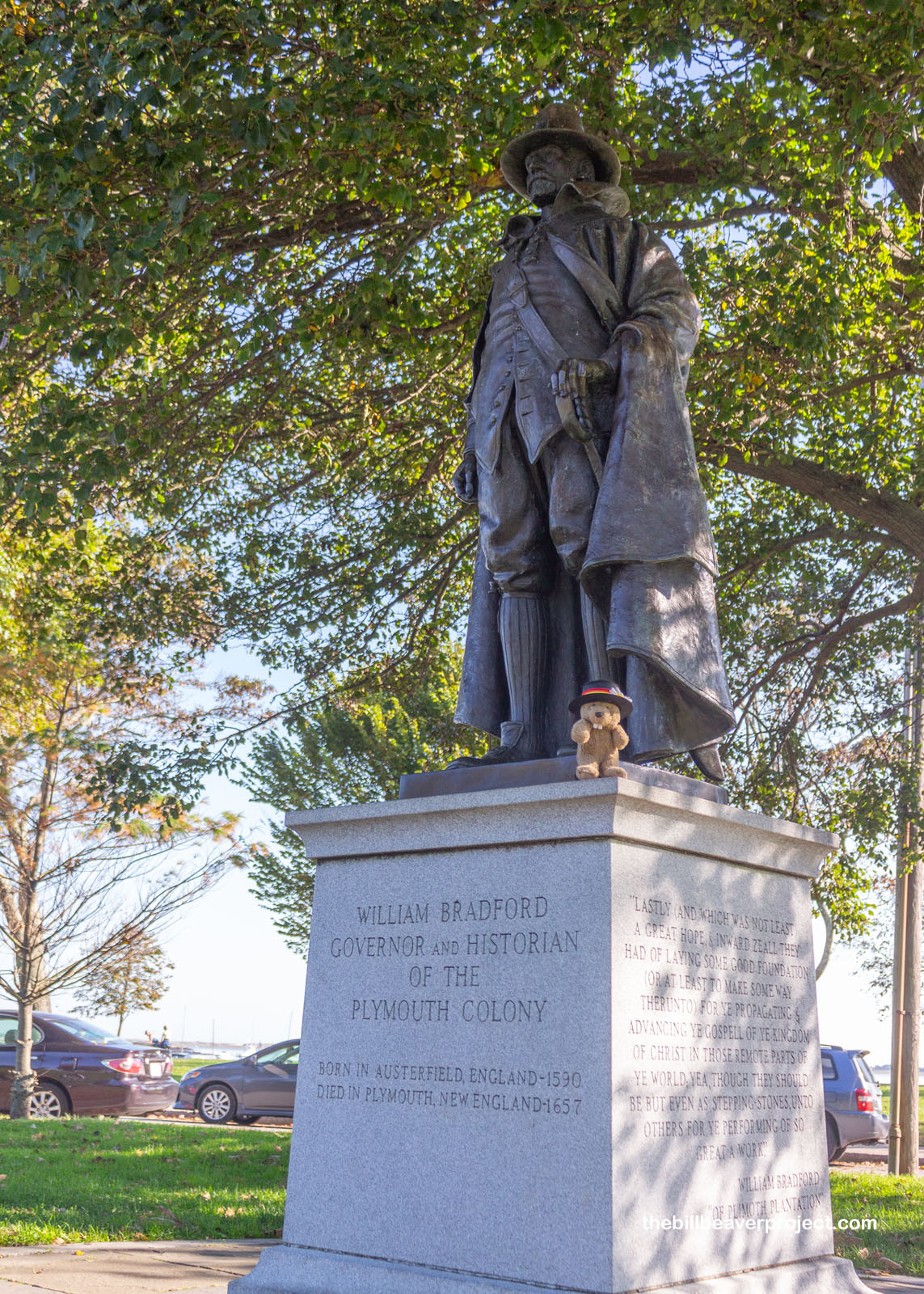 |
Oh yes, and the Mayflower was still afloat in the harbor near the Rock, well, Mayflower II anyway. It turns out that Mayflower was a common name for ships, and after dropping off the Pilgrims, the original Mayflower returned to England, where it was probably sold for scrap within four years! Mayflower II meanwhile, was built between 1955 and 1957, using the same tools and techniques of 17th Century English shipbuilders! She set sail from Plymouth, England on April 20, 1957 and arrived in Plymouth, Massachusetts on June 13th. She’s been a floating maritime museum here ever since! She was quite a sight for all ashore, including Freckles the Loon, who happened to be visiting Plymouth from Finger Lake in British Columbia! Despite what they say about loons, she was a very sensible character!
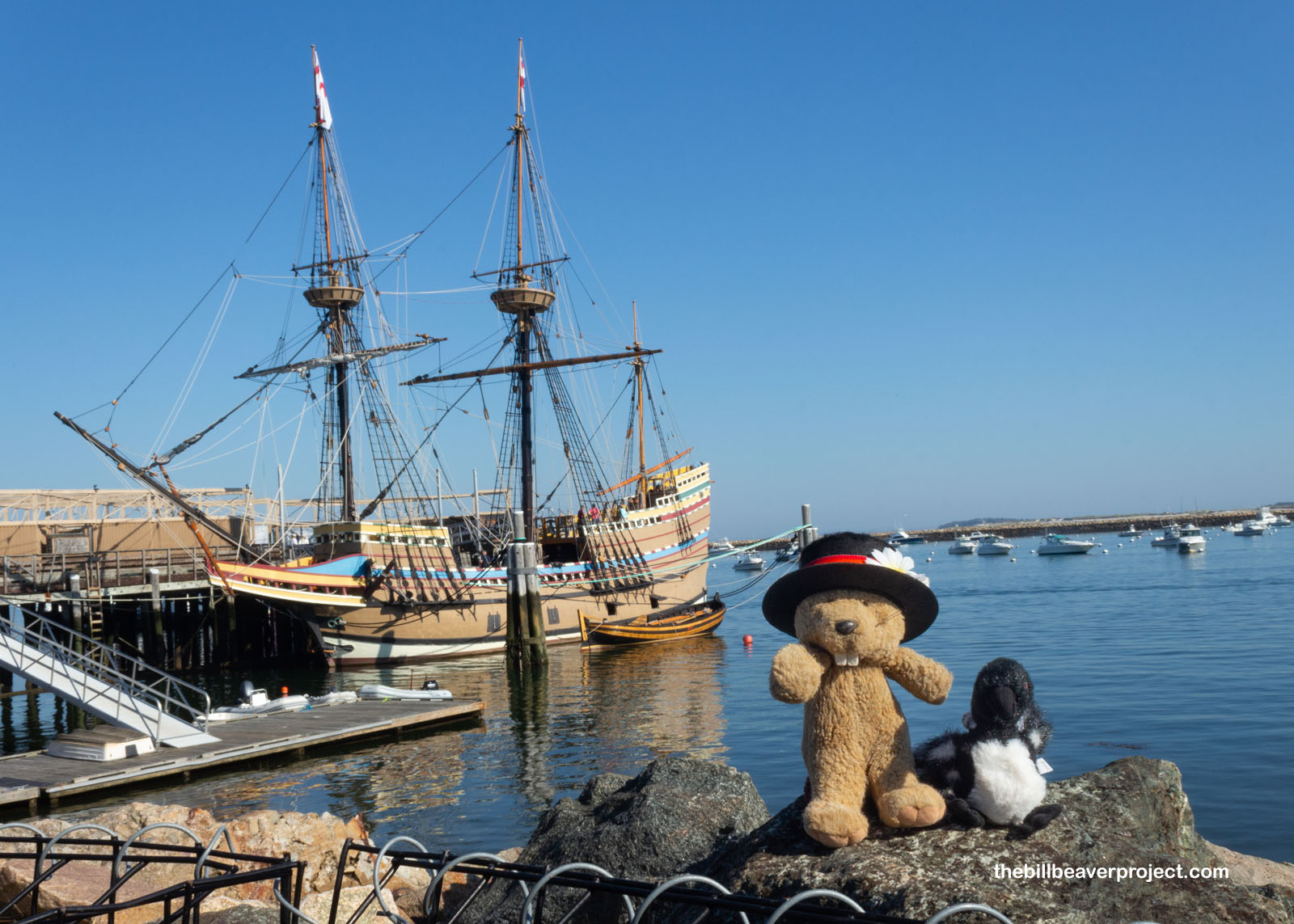 |
The Mayflower II has been painstakingly rebuilt to be a working ship as it was when helmed by Captain Christopher Jones. The ordeal of taking this separatist group across the Atlantic took such a toll on the captain that he actually died one year after returning to England! The great cabin where he spent most of his time was still very well preserved.
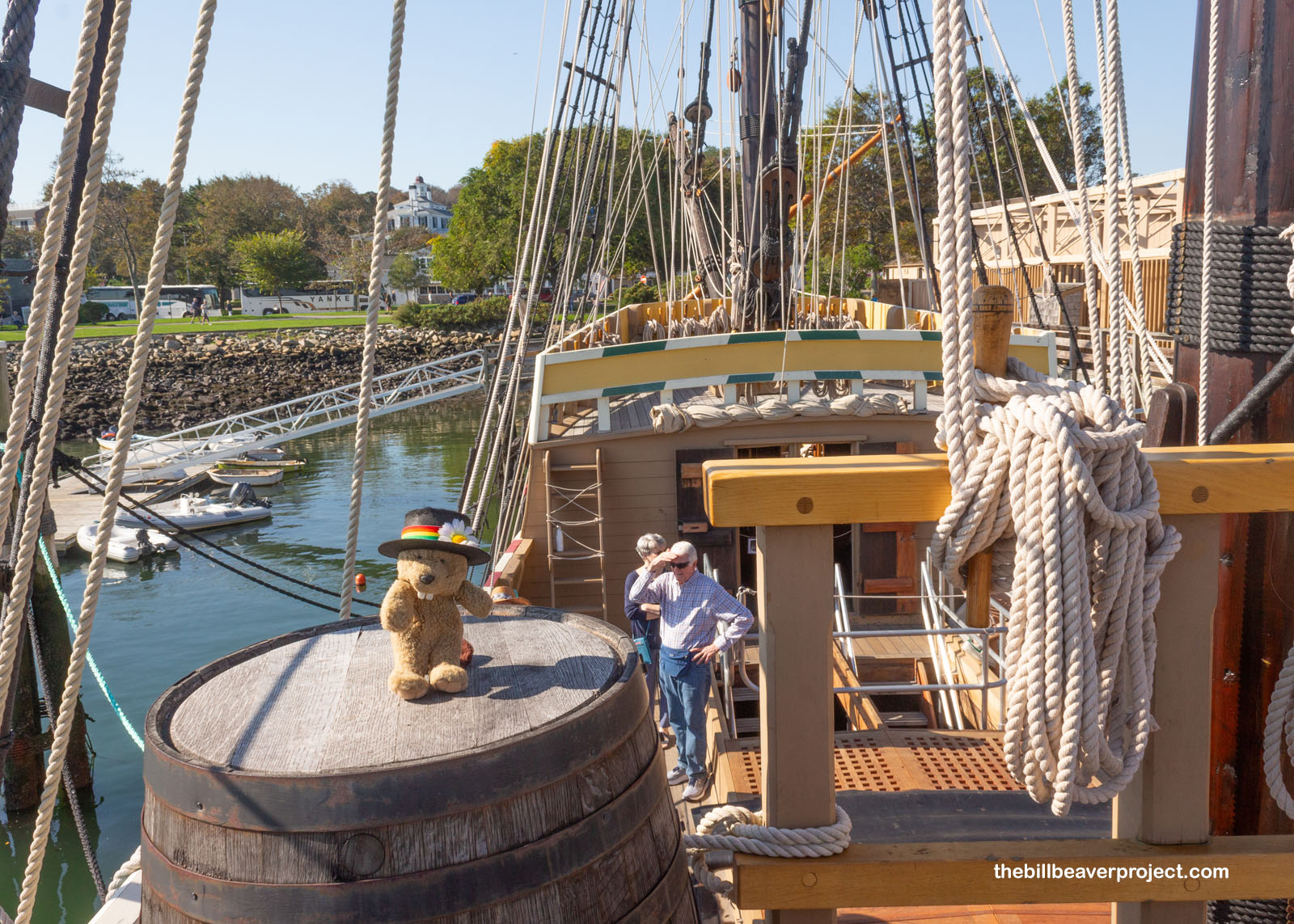 |
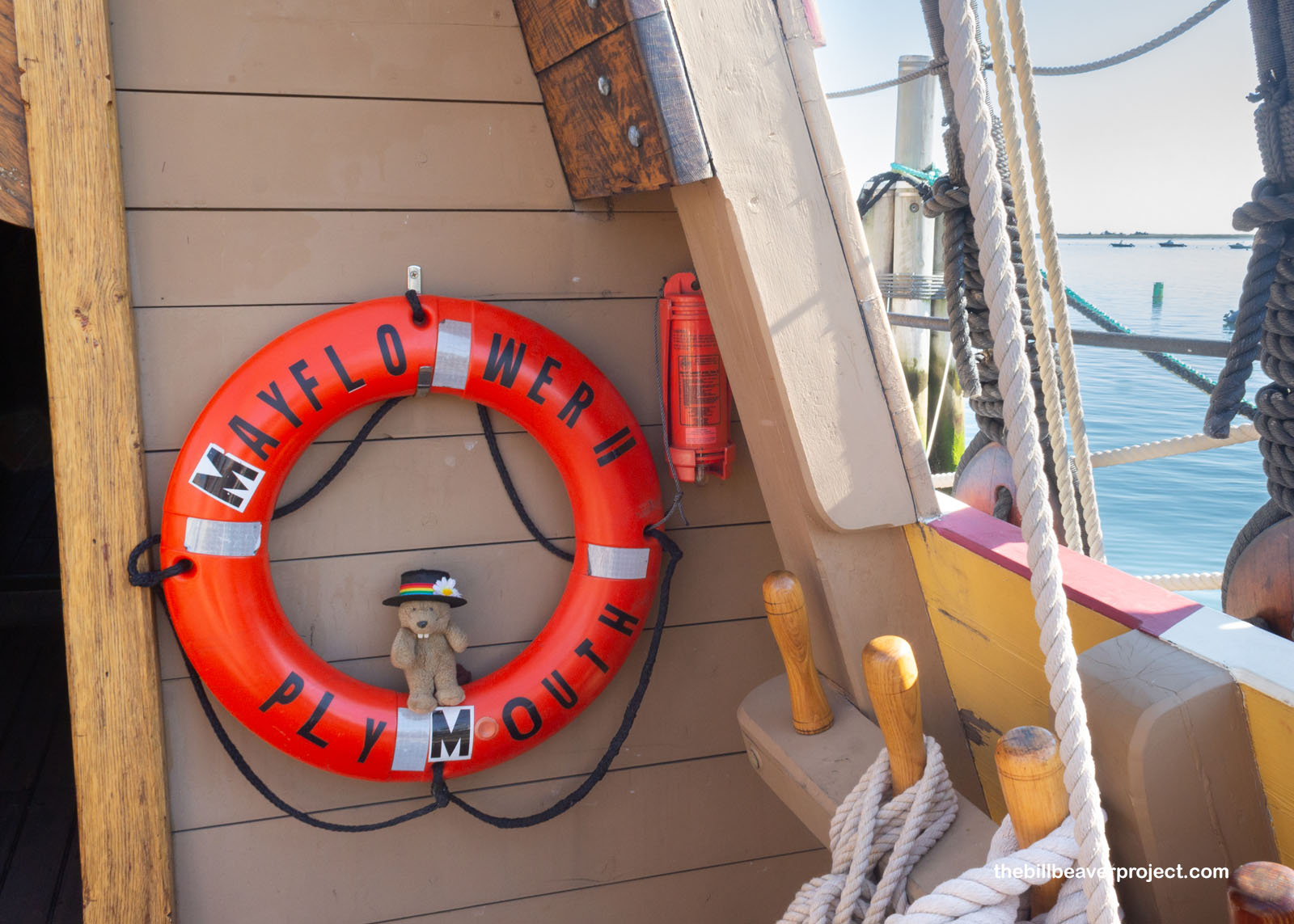 |
But 102 Pilgrims, Protestants who were neither Catholic nor Anglican and therefore guilty of treason under English law, all crammed together into the cargo hold with their supplies and all the livestock they were bringing! They originally meant to get to the Dutch settlement of New Amsterdam, but after two months and five days at sea, they landed way out on Cape Cod, where Provincetown is located today! A near mutiny ensued, and a month of searching later, they crossed the bay to Plymouth, and rock or no rock, that’s where they settled, in the Wampanoag village of Patuxet, obliterated by Dutch diseases!
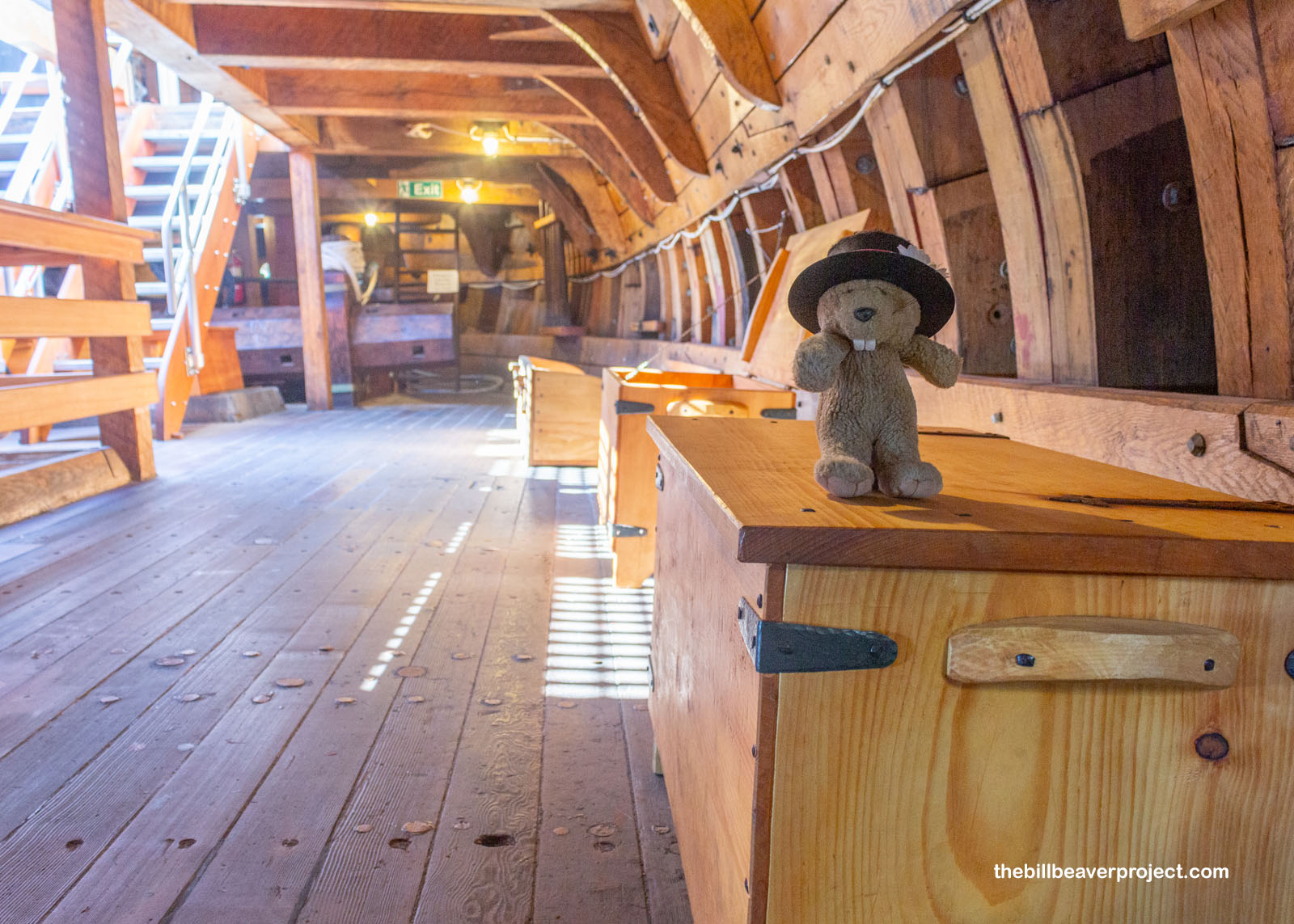 |
Key to their survival was the leader of a different tribe: Ousamequin, who was Massasoit of the Pokanoket. Their peace treaty with Plymouth was made on March 22, 1621, nowhere near the date we usually set for Thanksgiving, and exchanged survival supplies for military protection against the Narragansetts! Ousamequin would later give land to Roger Williams to form Rhode Island, kicking off an expansion that his son, Metacomet, would try to stop in 1675. Called King Philip’s War, this three-year campaign saw an alliance between the Wampanoag and the Narragansetts, but they were nonetheless all but destroyed. Metacomet’s head sat on a pike outside Plymouth for twenty years.
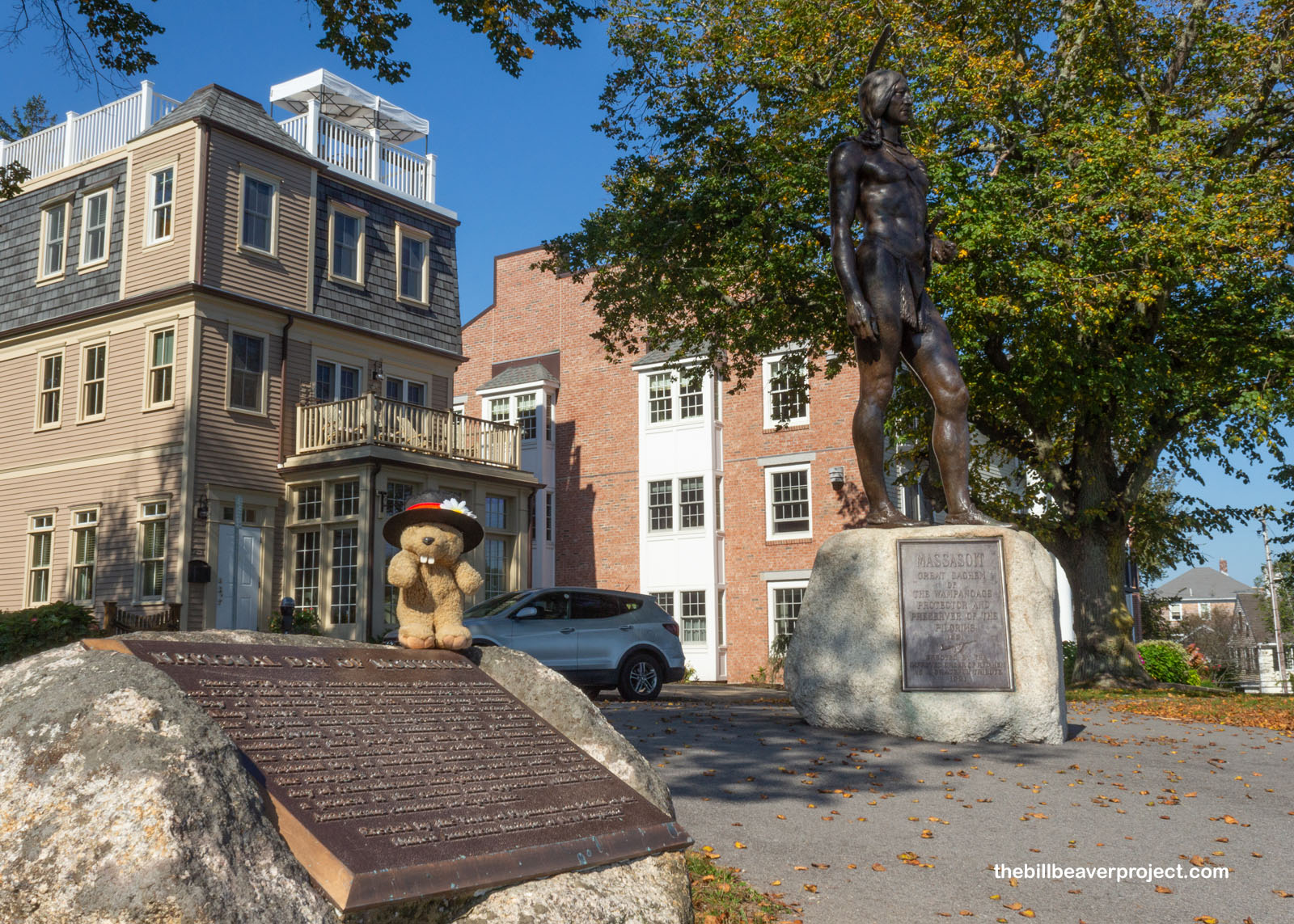 |
But history is written by the victors, and today, Plymouth is home to the 81-foot tall National Monument to the Forefathers, unveiled on August 1, 1889. At the top of the granite behemoth stands the depiction of Faith, while below her sit Morality, Law, Education, and Liberty. These were held to be the values of the Pilgrims, on which the United States were later built, at least in name!
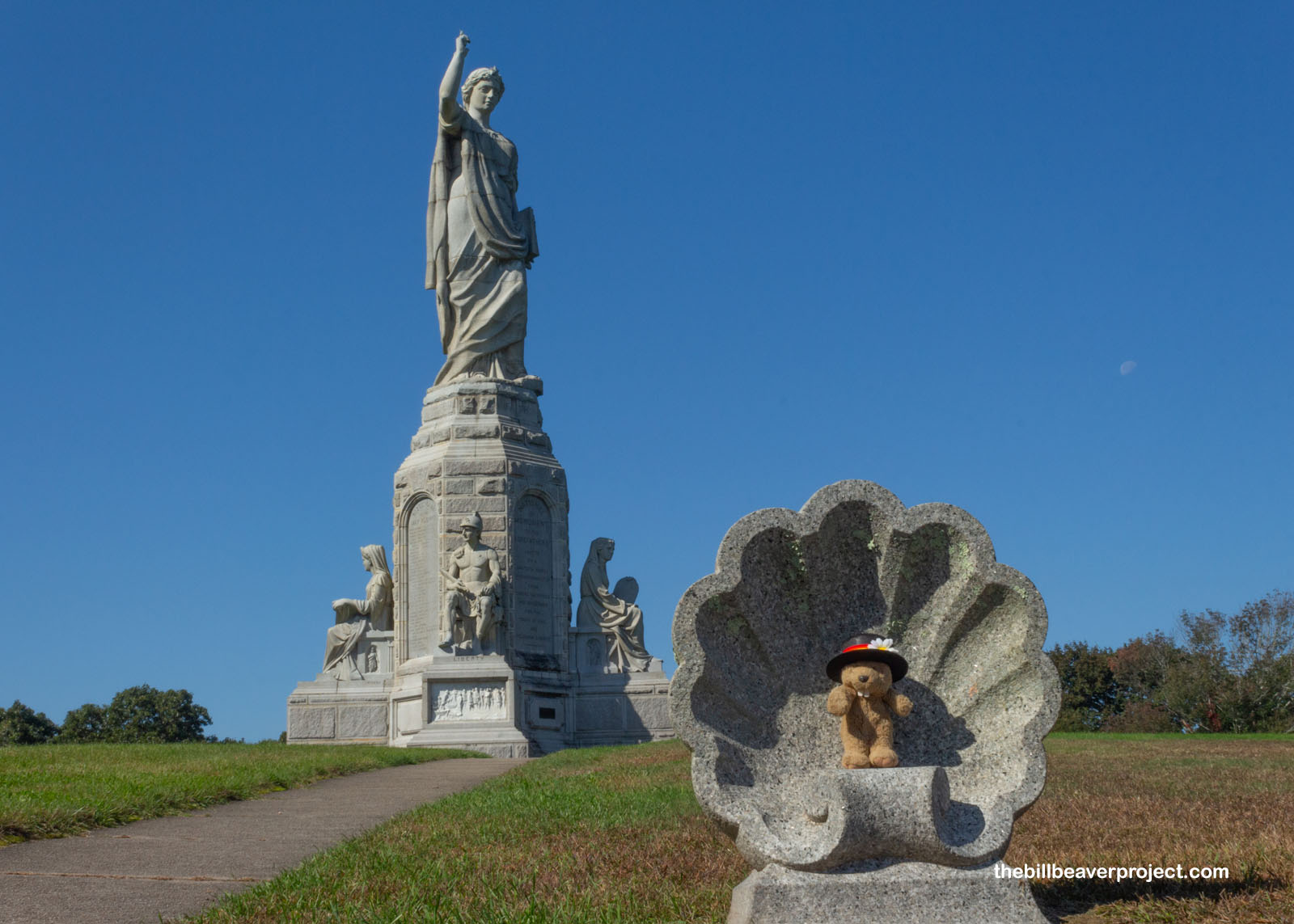 |
But that’s not the only whale of a tale being told. Certainly not! Why, not so far south was the town of New Bedford, made famous as the setting where we meet Ishmael and Queequeg for the first time in Moby Dick! And sure enough, it has retained its whaling history as home to the New Bedford Whaling National Historical Park!
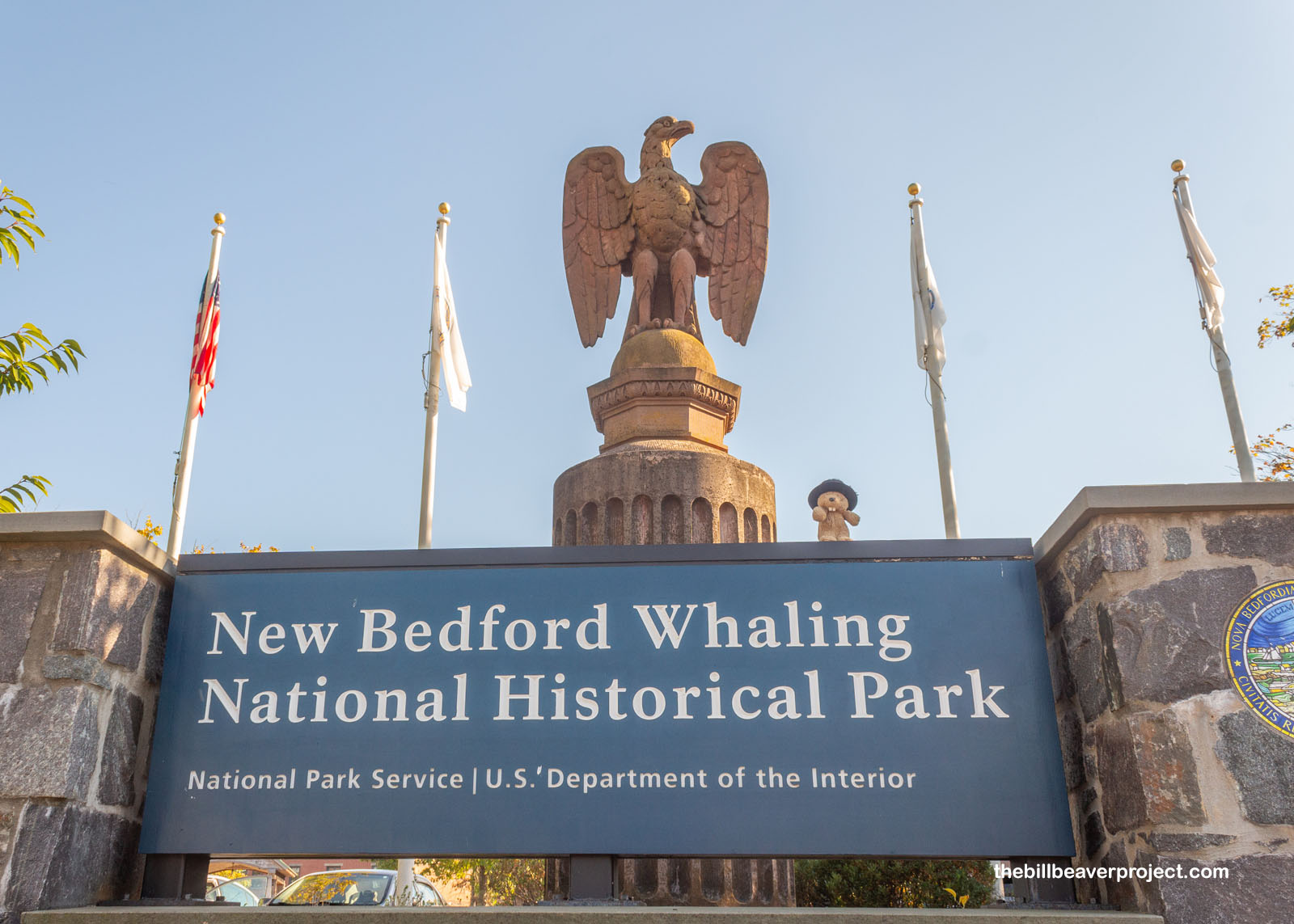 |
The whaling industry sprung up here in the late 1700s after British blockades had devastated Nantucket’s whaling. Plus, New Bedford had a deeper harbor connected to the mainland, and so a whole community sprung up here around hunting whales. Some of those original buildings are still here too, like the Mariners’ Home, originally just the house of whaler, William Rotch, Jr. and later moved to this location in 1850 and converted into a home for transient whalers! And of course, the Seamen’s Bethel, completed May 2, 1832, catered to their spiritual needs, as noted in Moby Dick as the scene where Ishmael listens to a Jonah-themed sermon from a pulpit built like a ship’s bow! That pulpit didn’t exist when Herman Melville was writing Moby Dick, but one got added to the chapel in 1961!
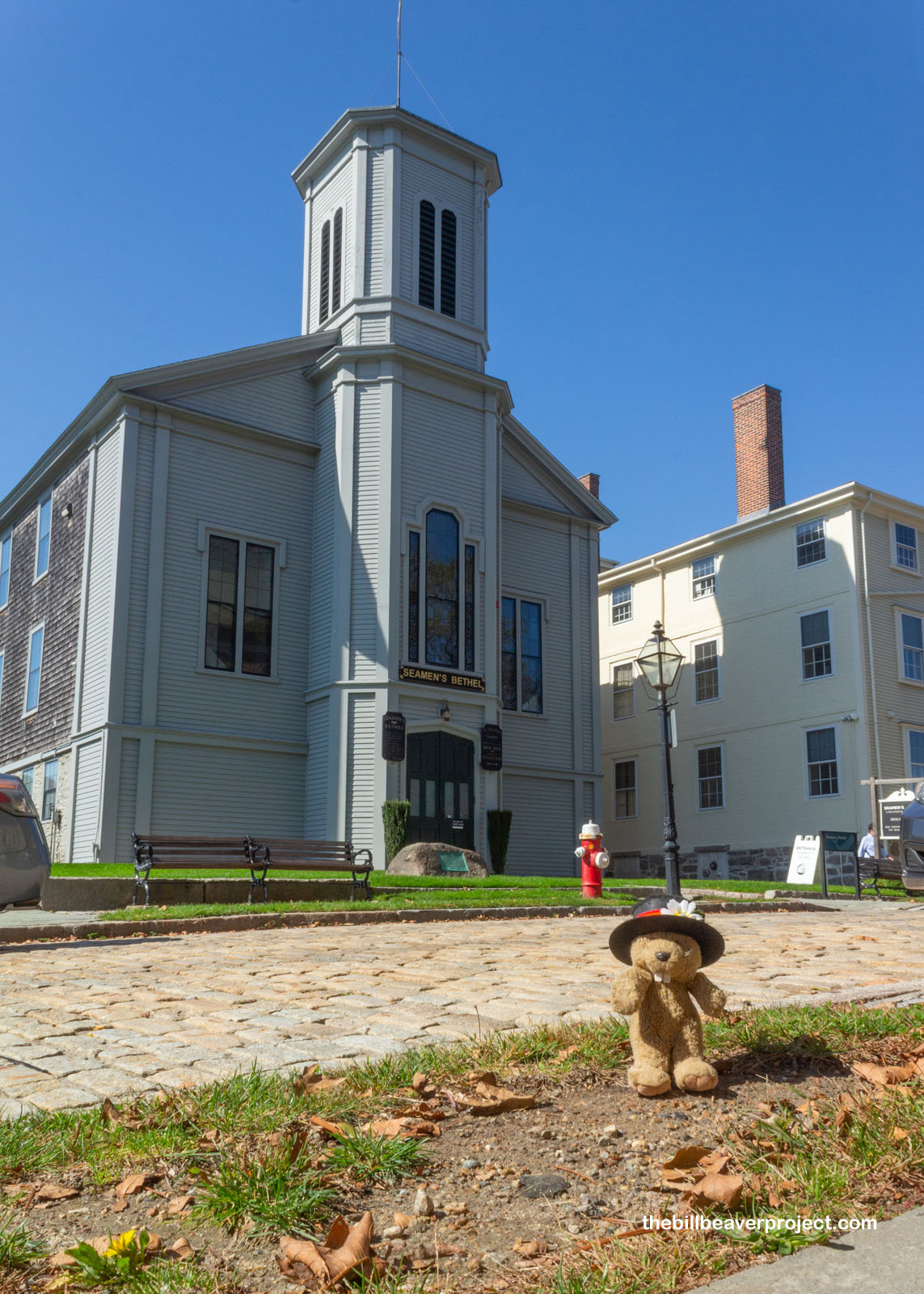 |
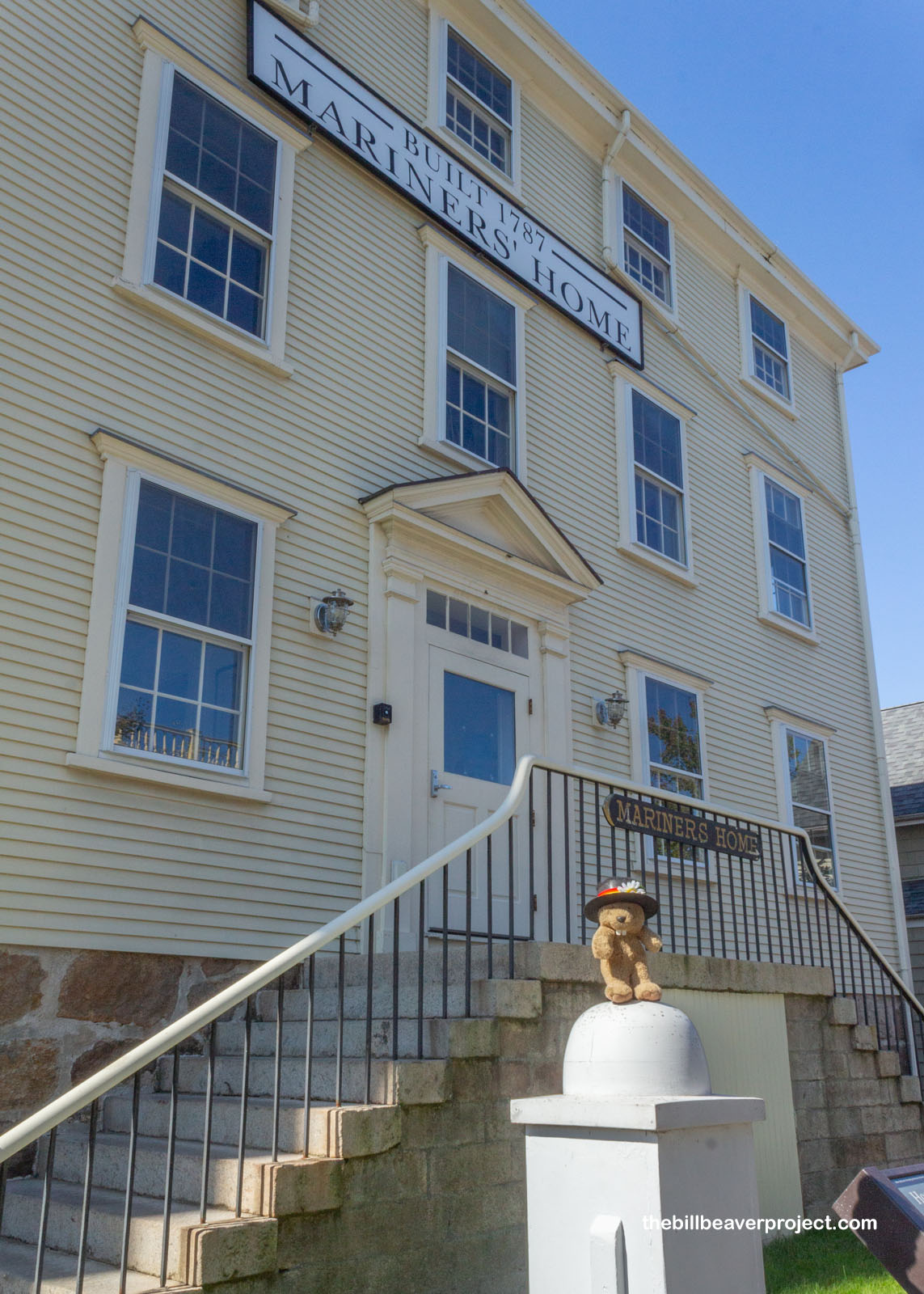 |
Really, the centerpiece of New Bedford is the whaling museum, built in 1903 and home to the world’s largest collections of scrimshaw art (carved whalebone) and the logbooks of ships! If there ever were a place to learn about the gruesome industry that lit the world for a hundred years, this was it!
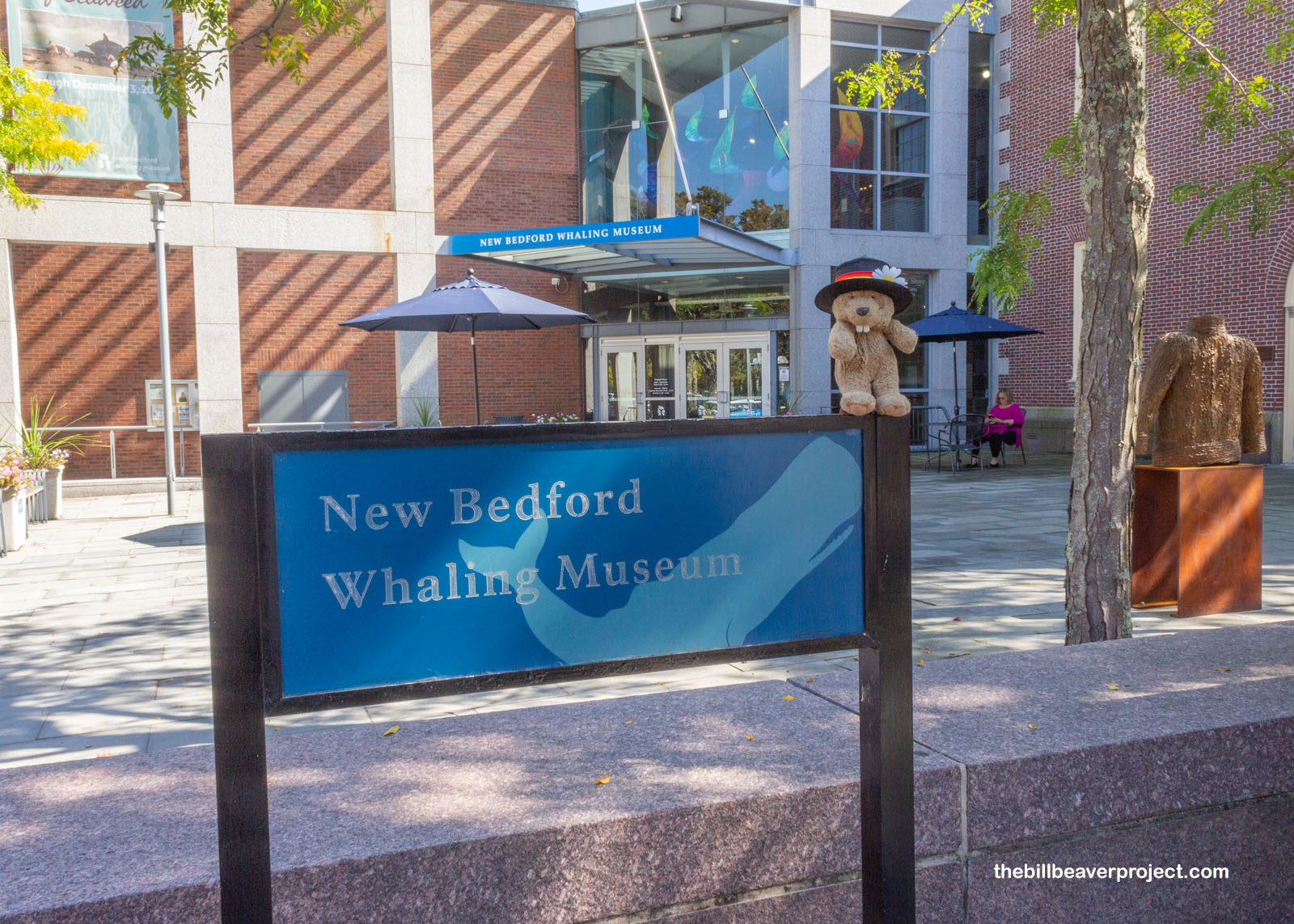 |
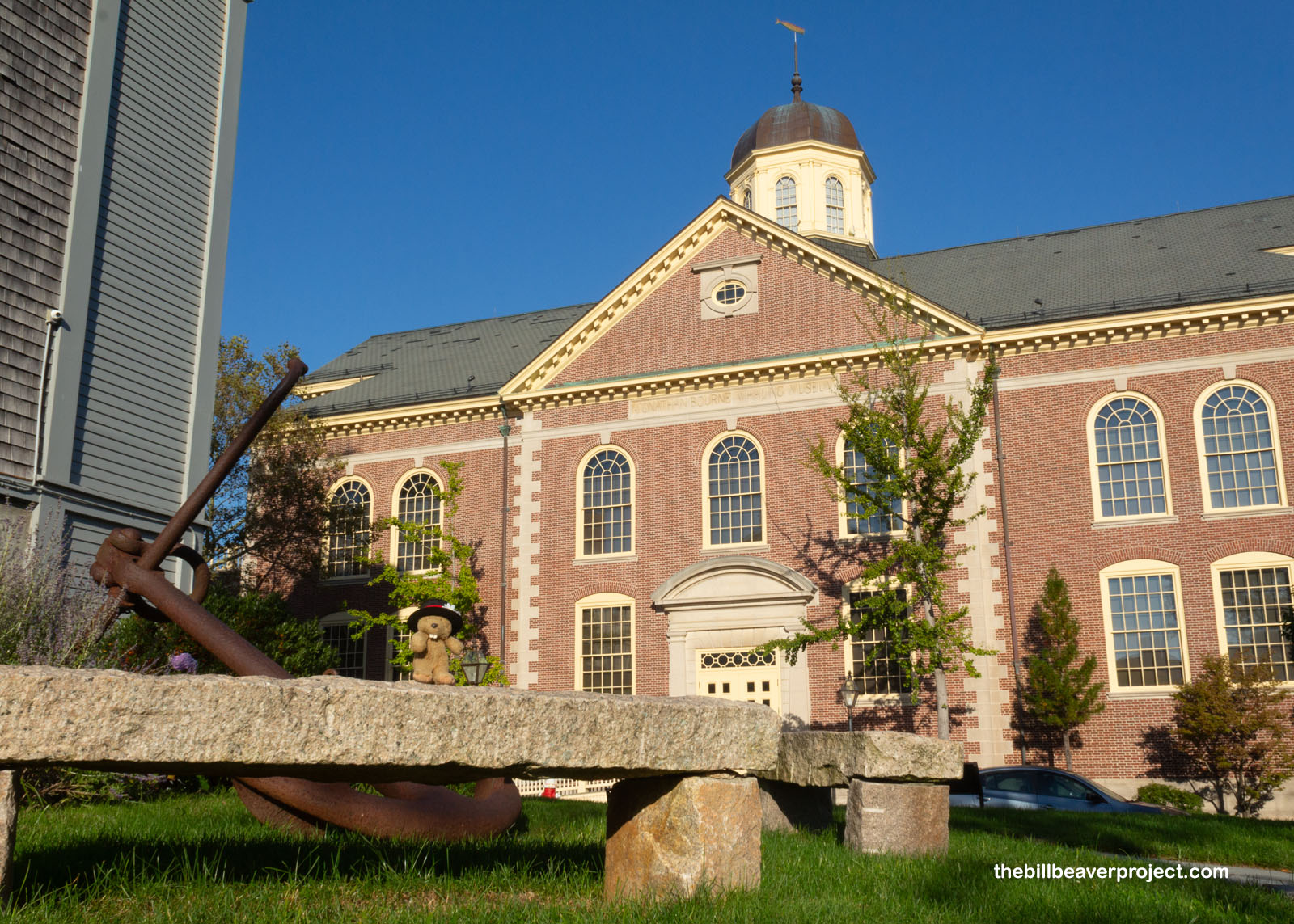 |
And from the looks of it, the whaling museum wasn’t necessarily going to be a celebration of whaling. Just outside the door stood Kin by Marnie Sinclair, a sculpture made of recycled plastic, wire, and hardware cloth as a reminder of human impact on whales. This one in particular is modeled after an unborn North Atlantic right whale calf that died with its mom after being struck by a ship in 2005! Their skeletons are inside, so I braced myself…
 |
The foyer of the museum was the perfect introduction: What are whales? What are their lives? What’s still threatening them now that whaling as an industry has diminished to a few places in the world? And whoa! They had a life-sized replica of a blue whale’s heart, five feet in diameter and weighing (in real life) up to 400 pounds!
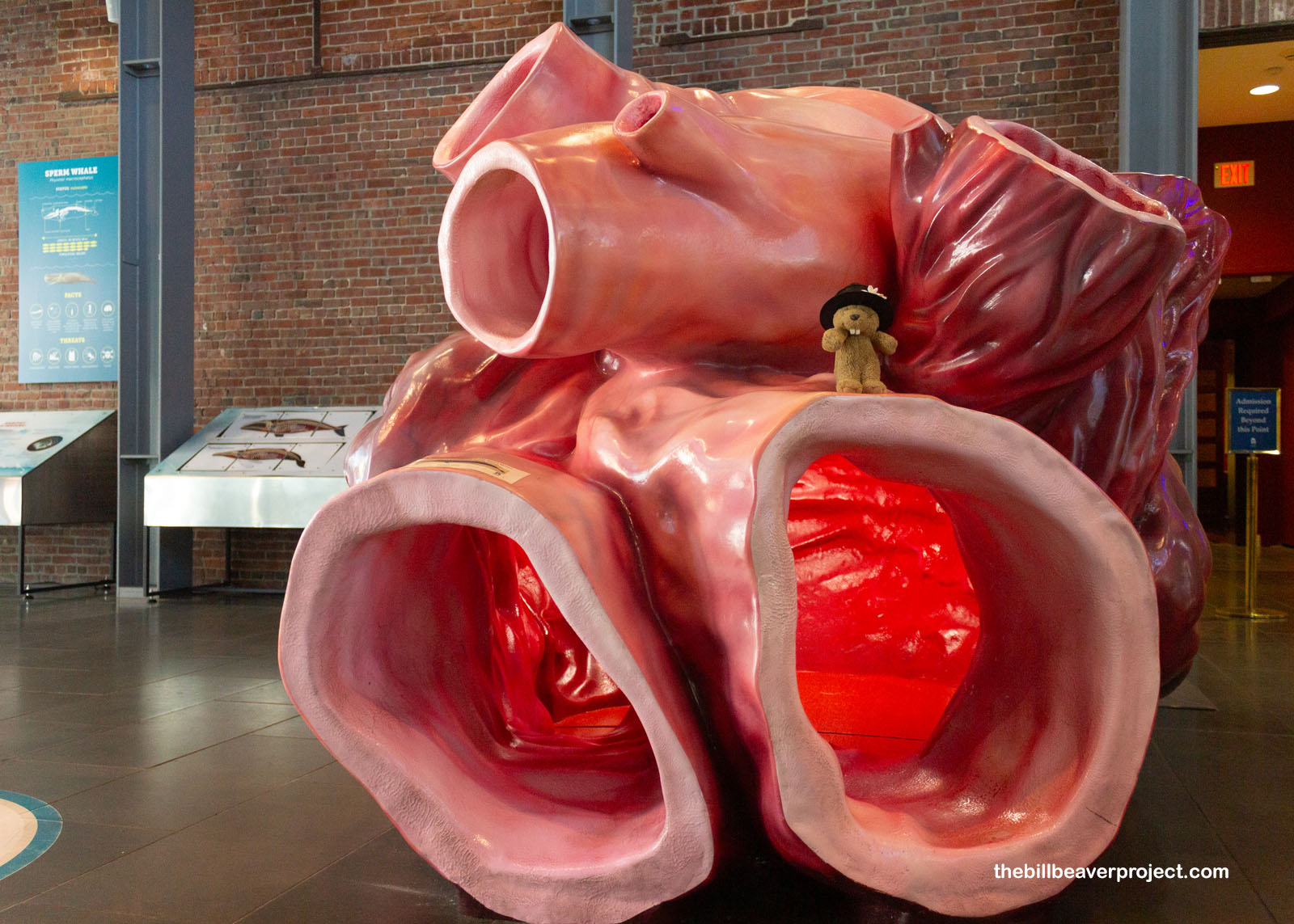 |
The skeleton of just such a blue whale was hanging high on the ceiling, next to the bones of a humpback (Quasimodo) and the poor right whale mom (Reyna) and calf. KOBO the blue whale (King of the Blue Ocean) was hit by a tanker near Rhode Island back in March of 1998. At 66 feet long, poor KOBO was only about 4-6 years old when he died, and his bones were not properly prepared! Normally, whale bones have to be composted in horse/elephant manure to draw out the oil, but KOBO wasn’t! That means his bones are still leaking oil from the ceiling 25 years later, all of which has to be caught and funneled away in a special tube before it causes a stinky mess on the floor!
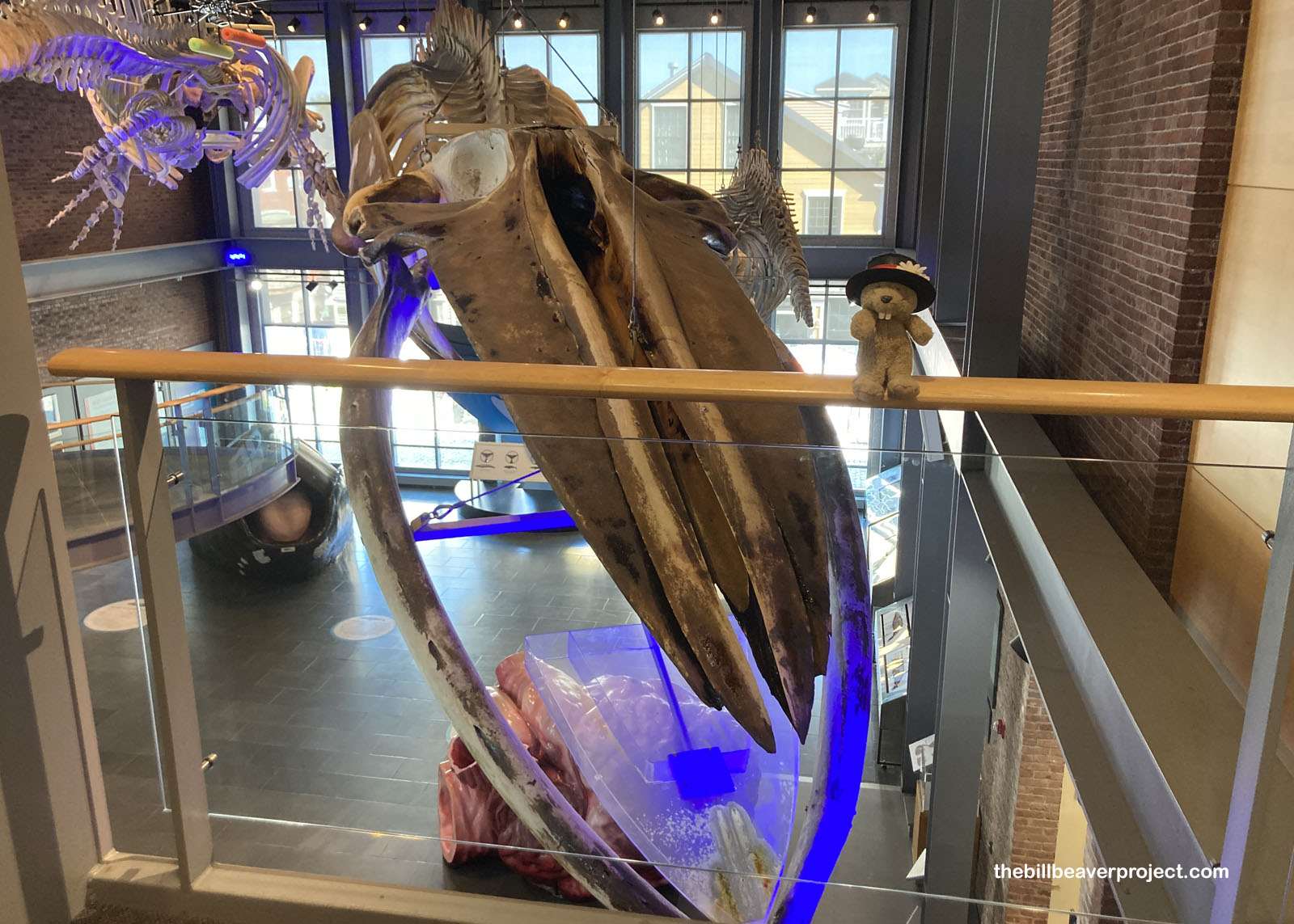 |
It was a gloomy start to the story of Atlantic whales, but there was at least a little bit of hope! 83% of all known right whales have scars from getting entangled in fishing gear, but that could be a thing of the past thanks to the Smelts’ Lobster Raft! These things are genius, making long lines a thing of the past. See, each lobster trap gets dropped to the bottom of the ocean, and when it’s time to pick it up again, the fisherfolk can locate it with GPS and send a special sound wave down to it, activating a float that brings it up to the surface! Whales can swim safely by without hurting themselves or disturbing the catch!
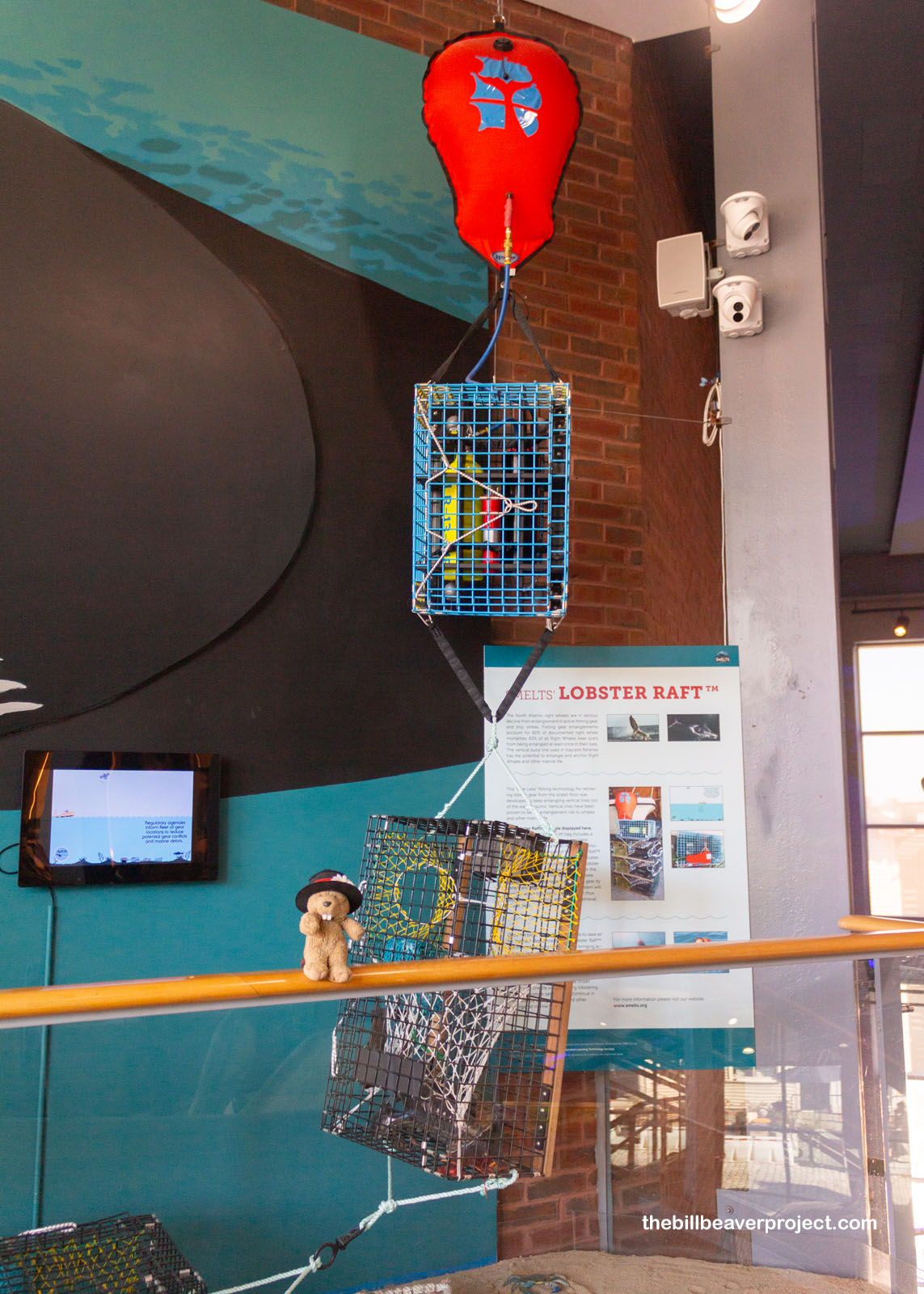 |
But this was still a museum of things past, as a reminder of how these whales got to their precarious spot in the first place. A big factor was in this little jar: spermaceti oil. From this whale oil, folks could make an odorless wax or an oil that stayed liquid even at cold temperatures, which could be used for candles, textiles, and even cosmetics! The light from a pure spermaceti candle was even used as the standard for measuring light intensity (candlepower) from 1860 until 1948!
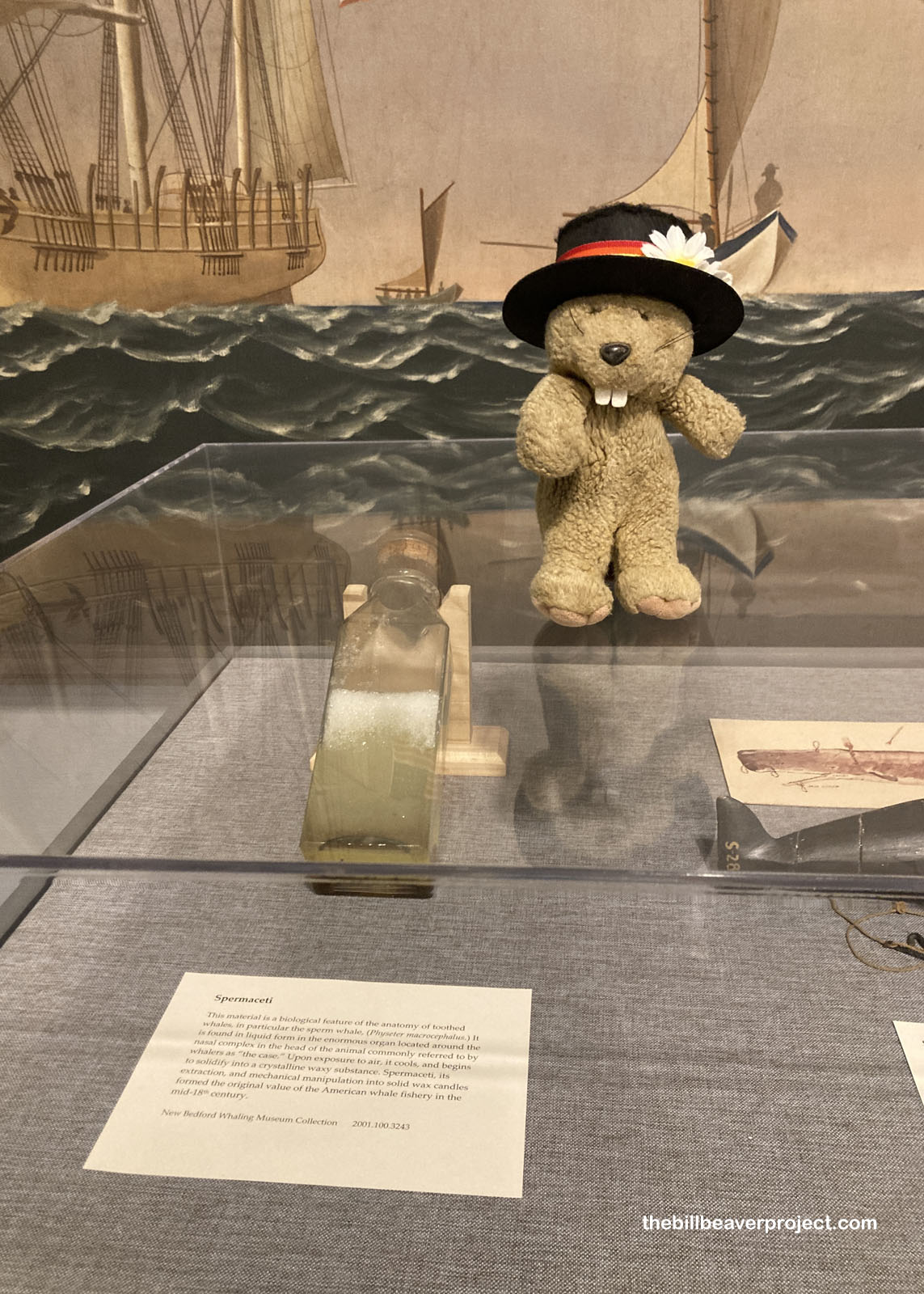 |
To get it, whalers focused on the sperm whale, whose enormous noggin is chock-full of spermaceti. The titular character of Moby Dick was an enormous sperm whale, battler of giant squid and an apex predator before humans hit the waves! While alive, it’s believed that they use the oil in their heads to regulate their buoyancy and to focus their echolocation! Looking at this enormous skeleton, which was found stranded on June 7, 2002, I wondered about how someone might draw a living sperm whale with only its skeleton to view. We could be way off on our depictions of dinosaurs!
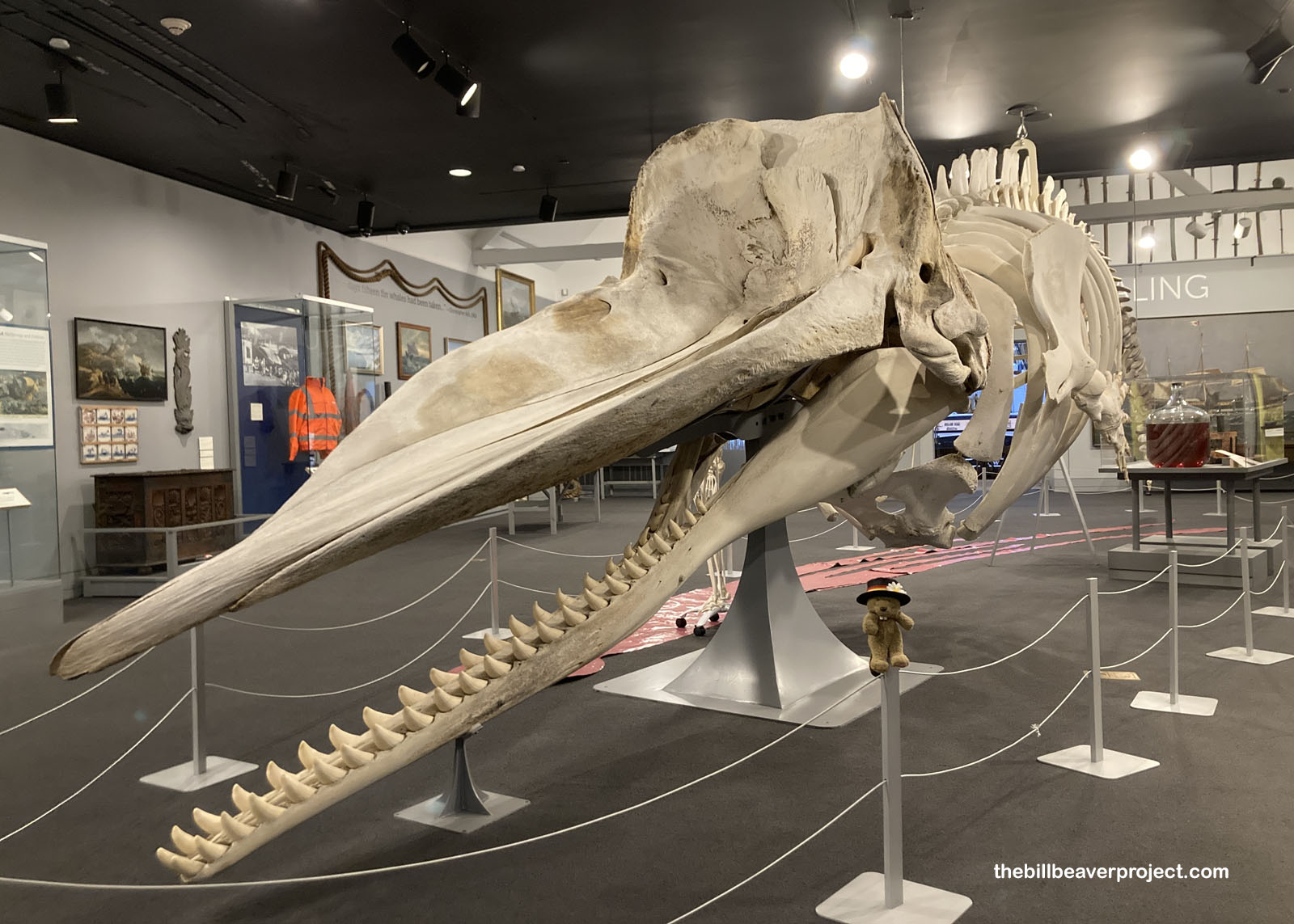 |
The next gallery was all about the industry around the world, from the Azores off Portugal to Rancho Palos Verdes to the Hawaiian whaling port of Lahāinā! Some of the earliest documented commercial whaling was actually done by Basque folks in the Bay of Biscay, and aided by the Age of Exploration, spread all around the world, up to the Arctic, and down to the Antarctic. Whalers would usually spend three years or more at sea hunting whales before returning home! As part of this exchange, it also turns out that New England clam chowder was actually developed by Portuguese whalers!
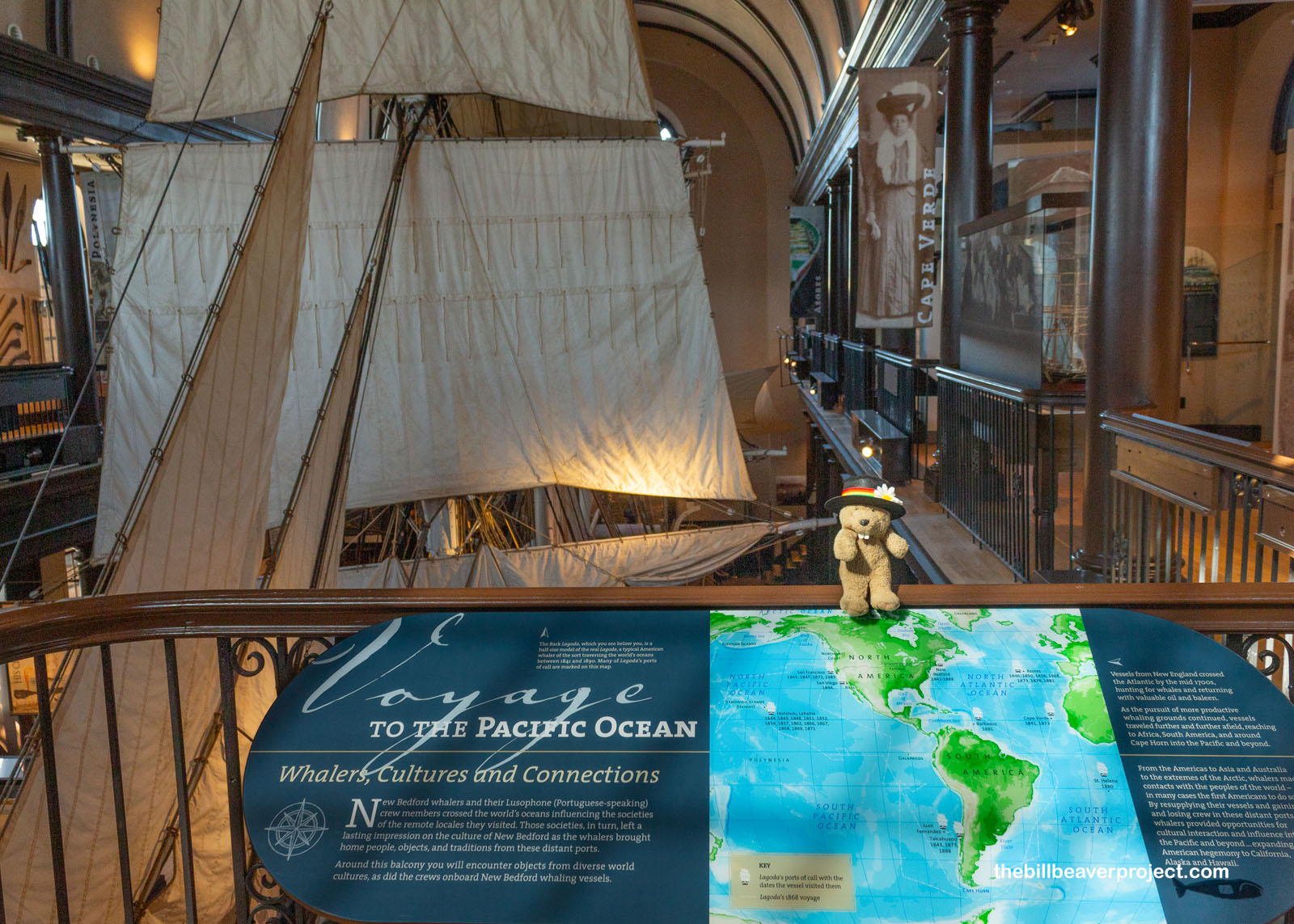 |
Back in Massachusetts, New Bedford took up the title of the “City that Lit the World!” As such, it’s still home to some important buildings, like the nation’s oldest continuously operating Custom House! Completed in 1836, its architect was none other than Robert Mills, the first internationally recognized architect born and trained in the USA! You might recognize some of his other works like, the Washington Monument! One of this Custom House’s important jobs was to issue Protection Certificates to American whalers. At sea, citizenship was more an unwritten understanding, so seafarers would pay 25 cents for one of these certificates to keep from being kidnapped and forced into service by the British Royal Navy! They were… mostly effective!
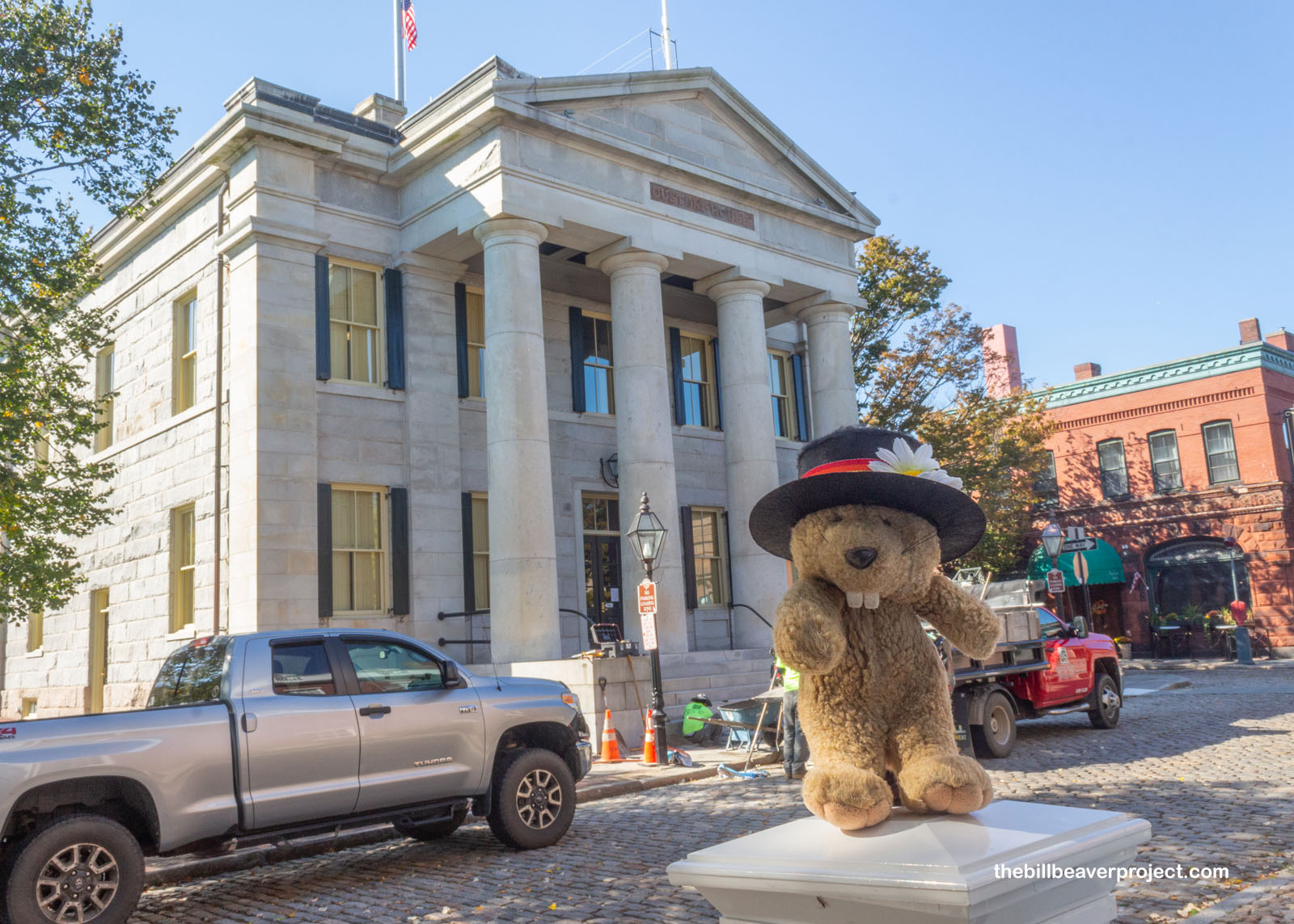 |
Other buildings surrounding the museum told of New Bedford’s prosperity, like the 1835 Greek Revival Double Bank building. It was called the Double Bank because it was split in half: a Mechanics Bank for craftsman and laborers and a Merchants Bank for the rich business owners! A good deal of that money came in through Samuel Rodman’s Candleworks, which processed spermaceti candles for home and street lights from 1810 all the way until 1900!
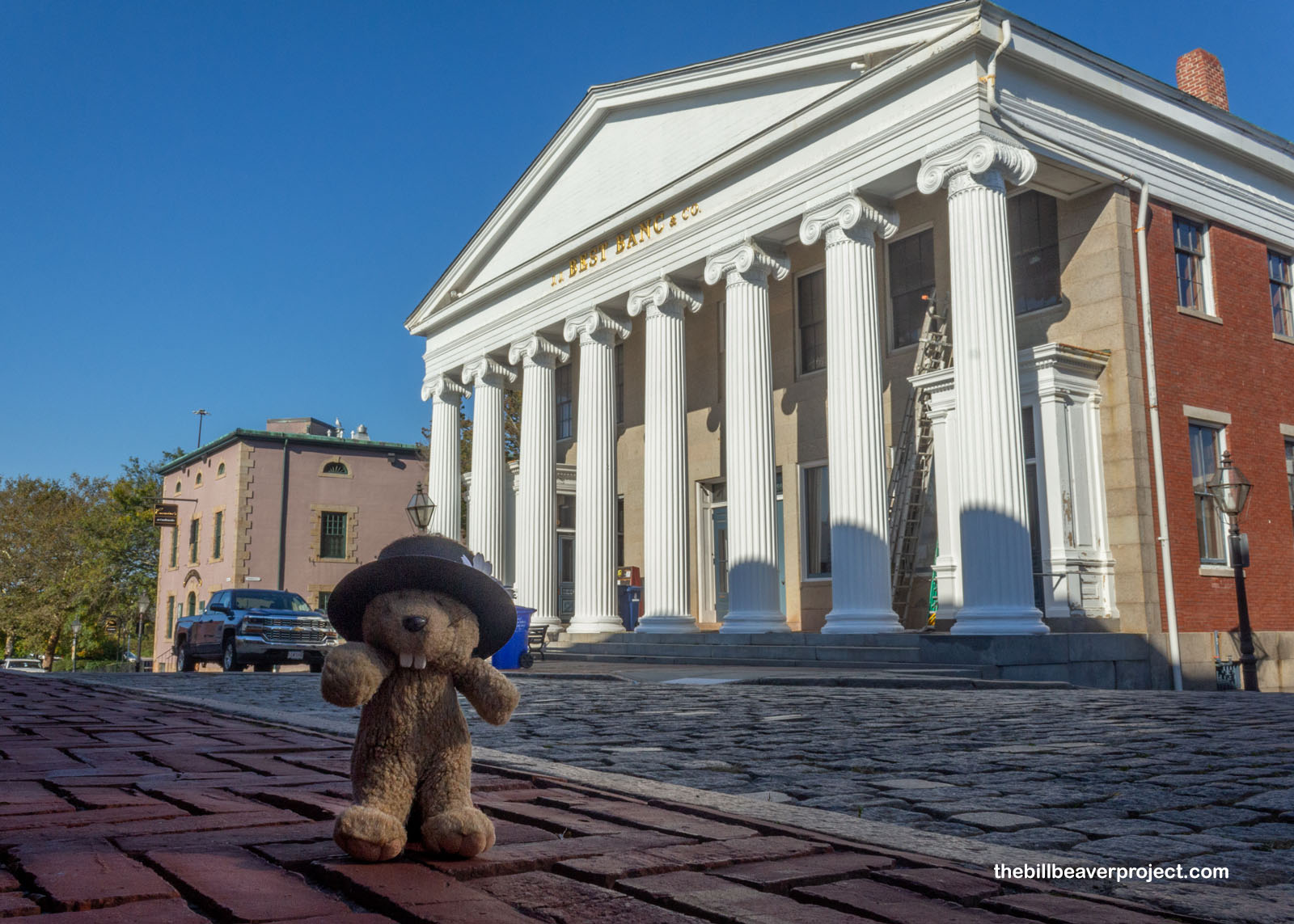 |
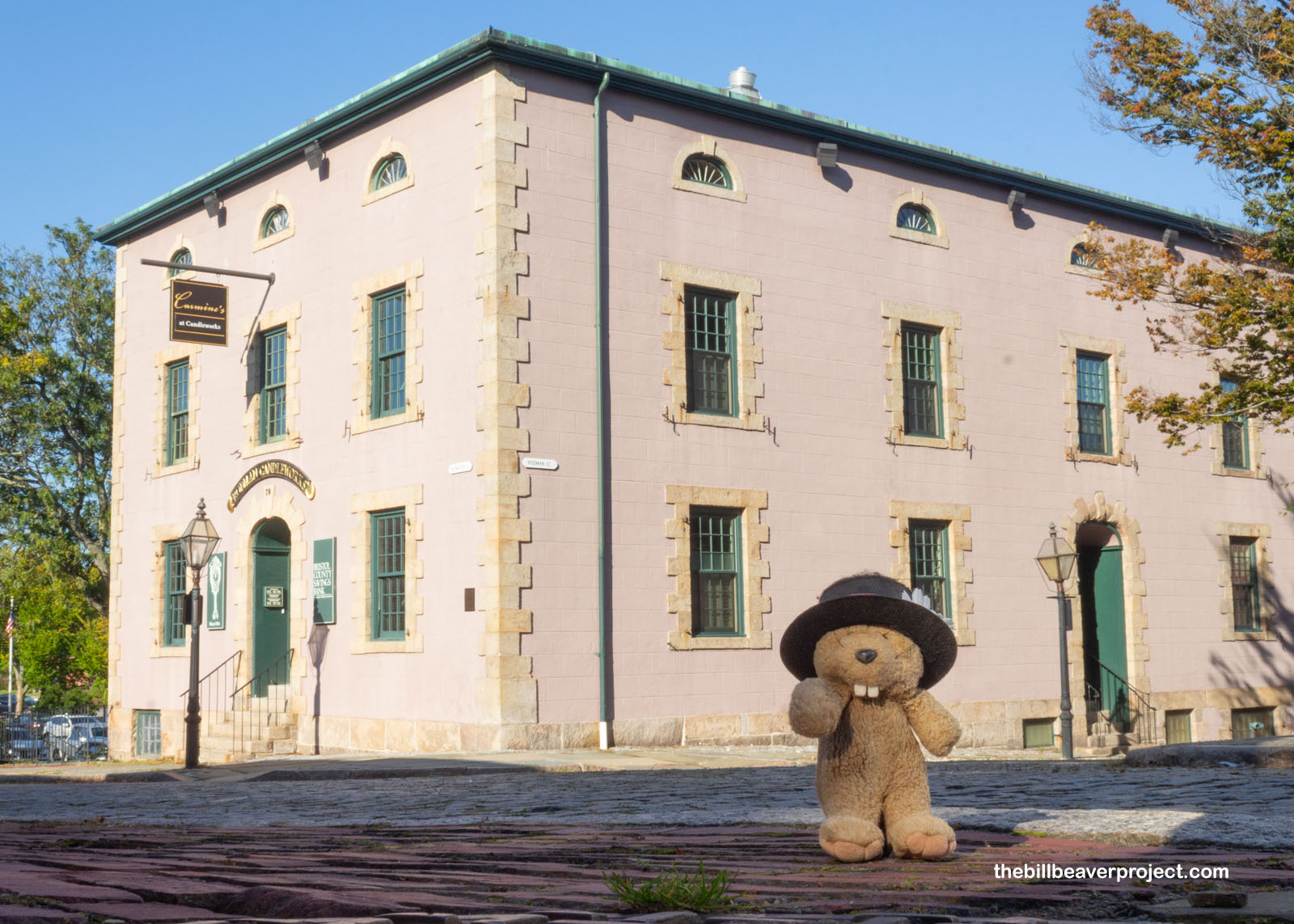 |
I completed my circuit of New Bedford Whaling National Historical Park with a view of the Schooner Ernestina-Morrissey, truly the little schooner that could! Launched from the James & Tarr shipyard in Essex on February 1, 1894, she was originally called Effie M. Morrissey in honor of Captain William E. Morrissey’s daughter. Her first role was as a fishing vessel off northeast Canada, which carried her through two more owners until 1926. That’s when Arctic explorer, Bob Bartlett, bought her and began running Arctic voyages for the likes of the Smithsonian, National Geographic Society, and Museum of the American Indian, bringing her the furthest north of any sailing vessel ever! After burning in a fire in 1947, she was salvaged and renamed Ernestina, a passenger ship between Massachusetts and Cape Verde! After multiple wrecks, dis-mastings, and repairs, the Ernestina came back to the USA as a gift from folks of Cape Verde in 1982, becoming a living history vessel!
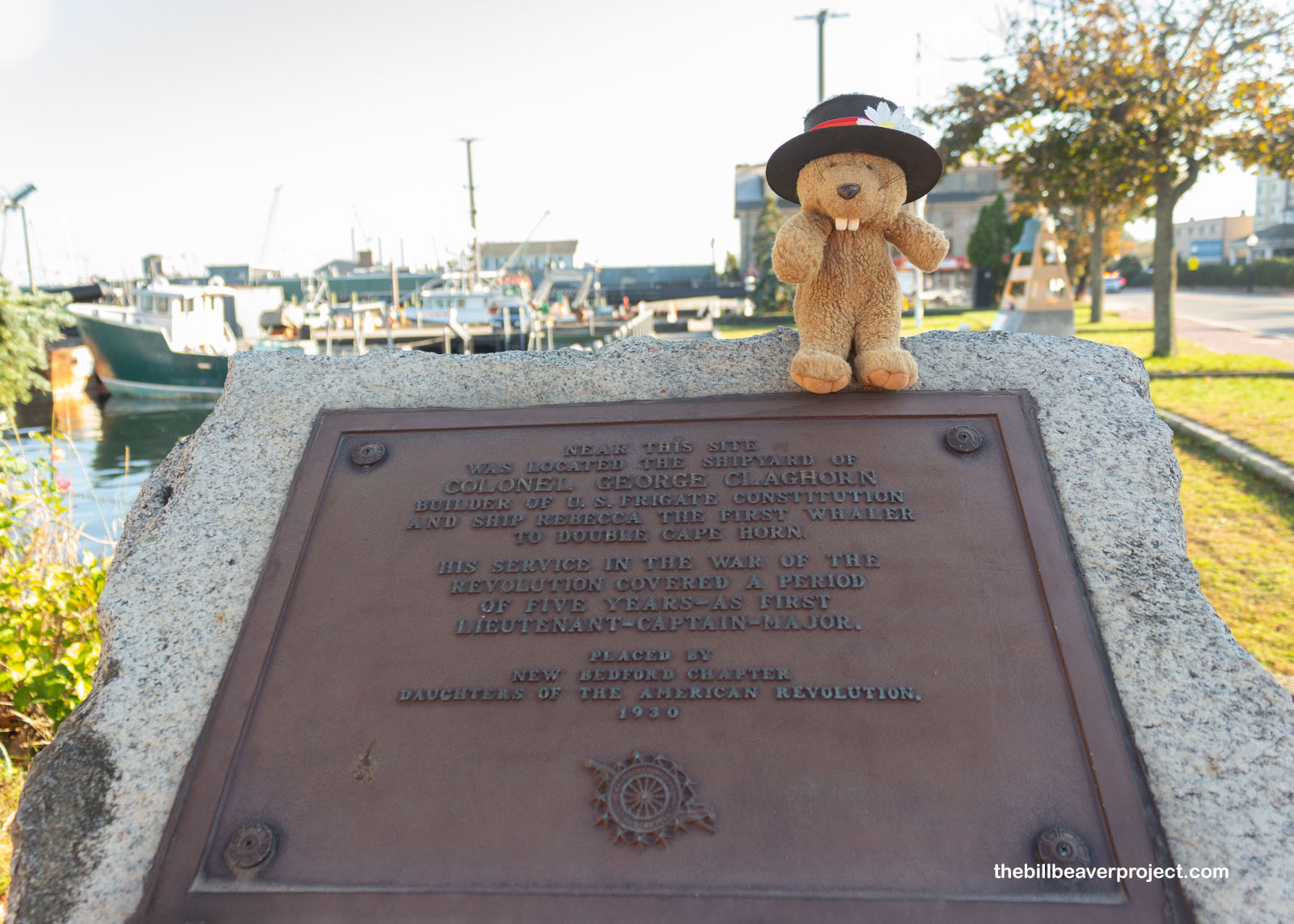 |
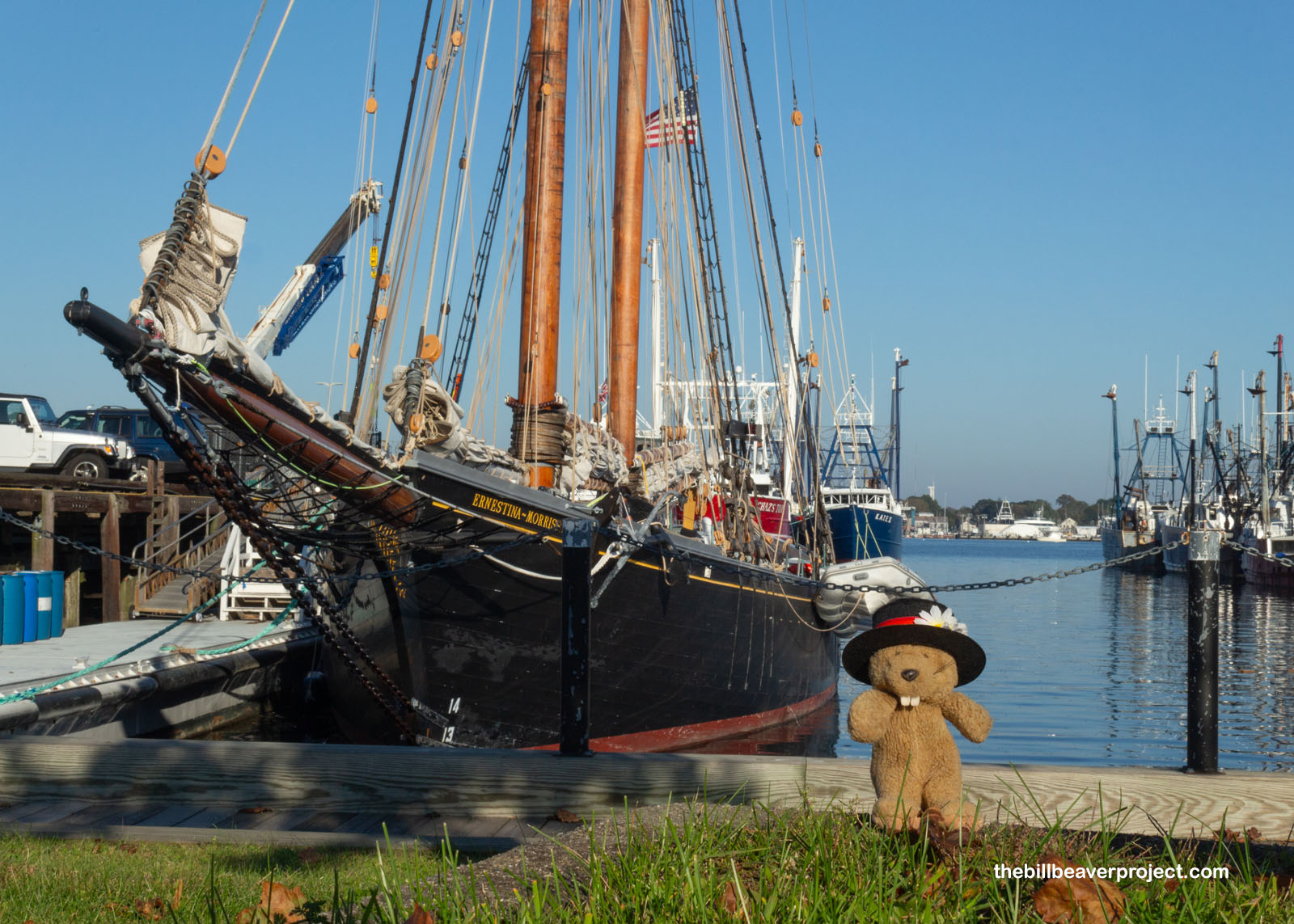 |
Before leaving town, I had to pay a visit to the home of Nathan and Polly Johnson, two abolitionists who ran a station on the Underground Railroad here in New Bedford! Using a friend’s Protection Certificate from the local Custom House, a young fellow named Frederick Bailey found safety here in 1838 after escaping slavery in Maryland. Here, his Quaker host suggested that they take on a new surname, drawn from characters in The Lady of the Lake by Walter Scott. Ever afterward, this Frederick was known as Frederick Douglass!
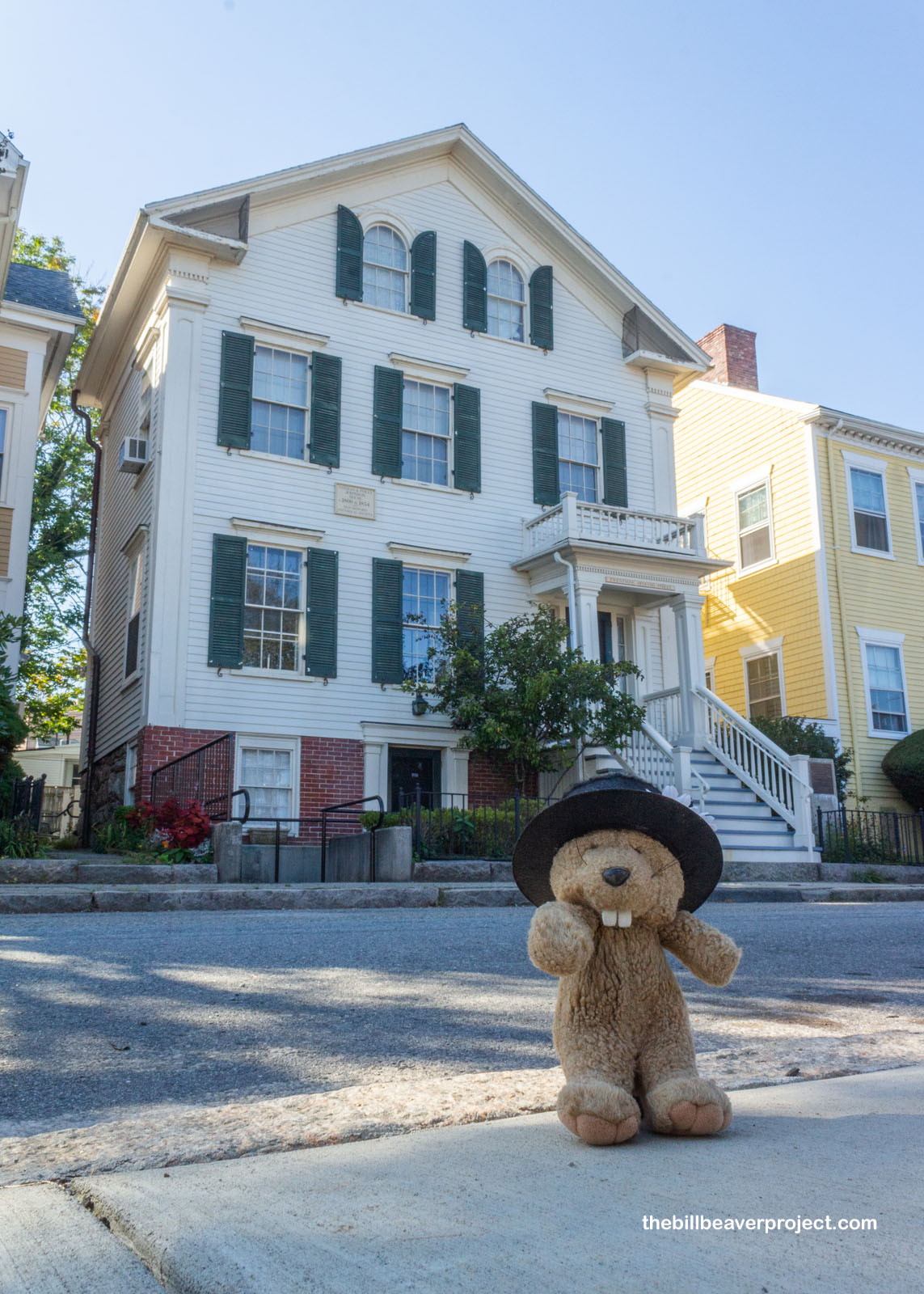 |
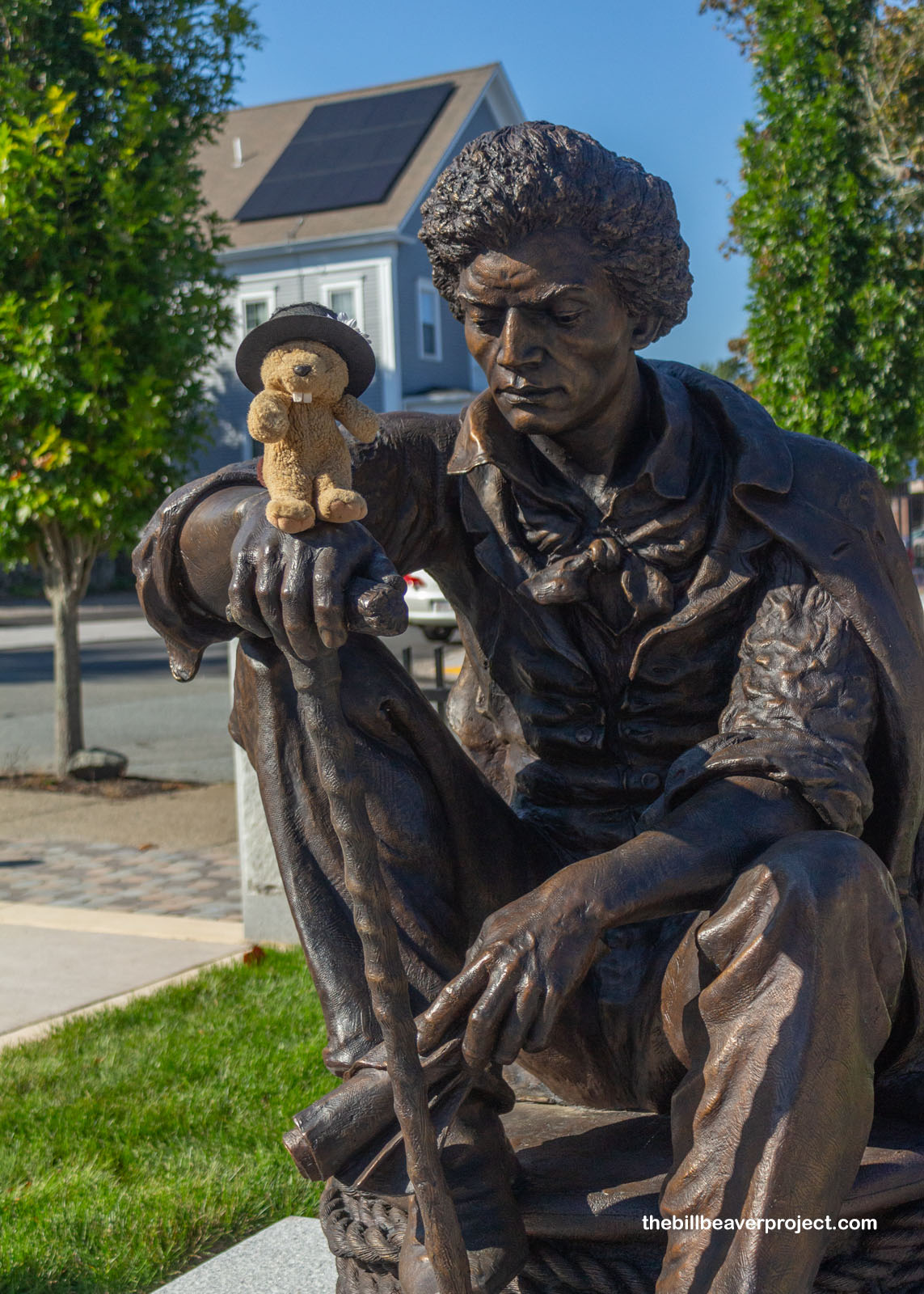 |
With the daylight fading, I had to make a quick detour based on something neat I learned in the whaling museum. Paul Cuffe was a half-Ghanaian, half-Wampanoag merchant and a whaler from the age of 14! Working with his Wampanoag family, he became one of the wealthiest folks of color in the country, using his money to build a smallpox hospital, an integrated school, and this Westport Meeting House! First African-American to get an audience with a US President (James Madison), he also played a prominent role in “repatriating” enslaved folks from the US and Canada to Sierra Leone!
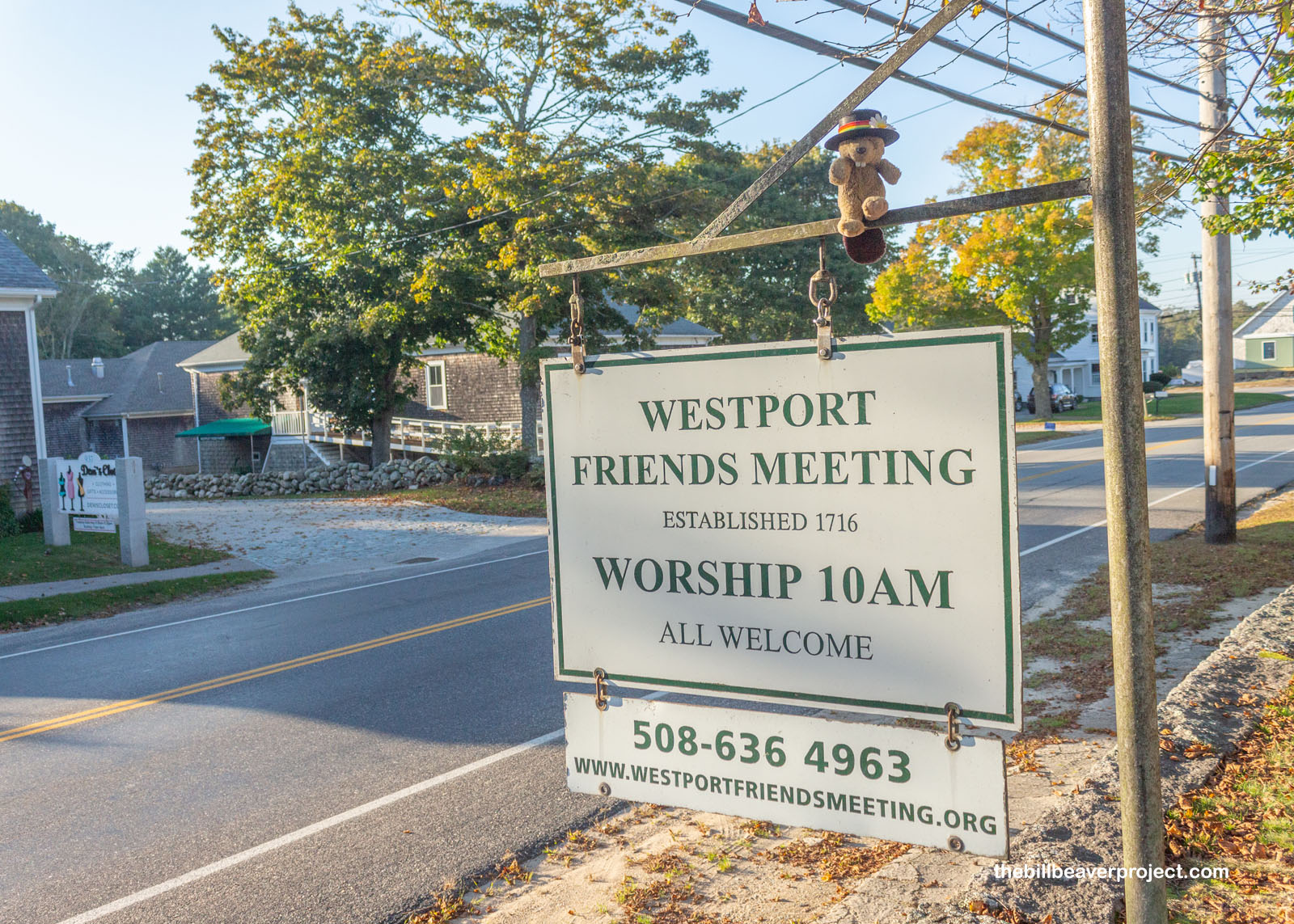 |
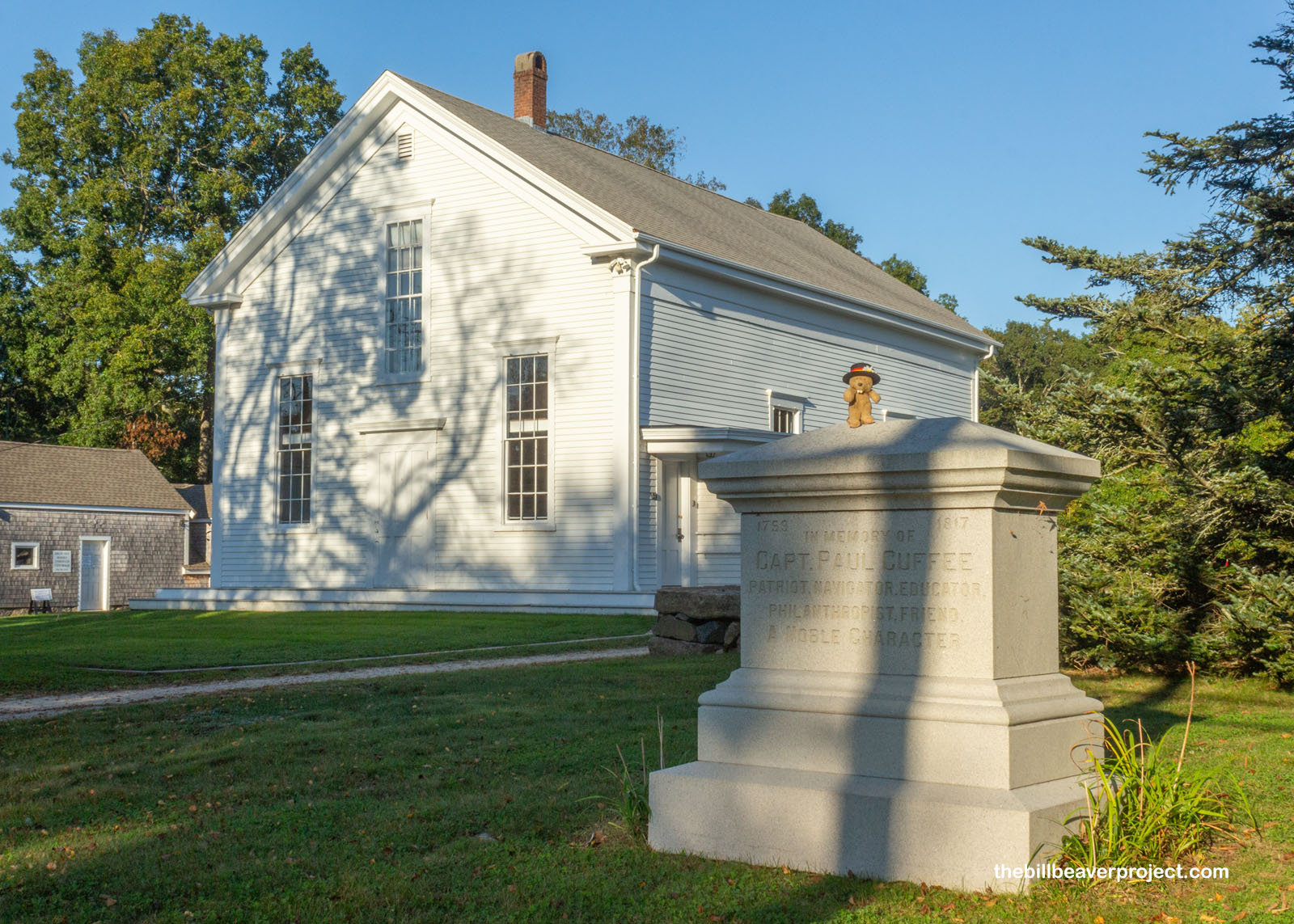 |
Whew! By the time I pulled up to my last stop, I felt like I’d sailed around the world, but there was still time to learn about Lizzie Borden in Fall River! Hers was the trial of the century back in 1893, following the grisly hatchet murders of her dad and step-mom! See, her dad had been very generous with his new wife’s extended family, less so with his daughters, which made Lizzie a top suspect when the Bordens were found hacked to death in their house, the night after her step-uncle had paid a visit. A trial jury acquitted her of the crime, but no other suspect was ever detained. Her name has gone down in the legends of mysterious murders, in the vein of the Amityville Horror, but today the house is a fun little bed and breakfast! Would you sleep here?
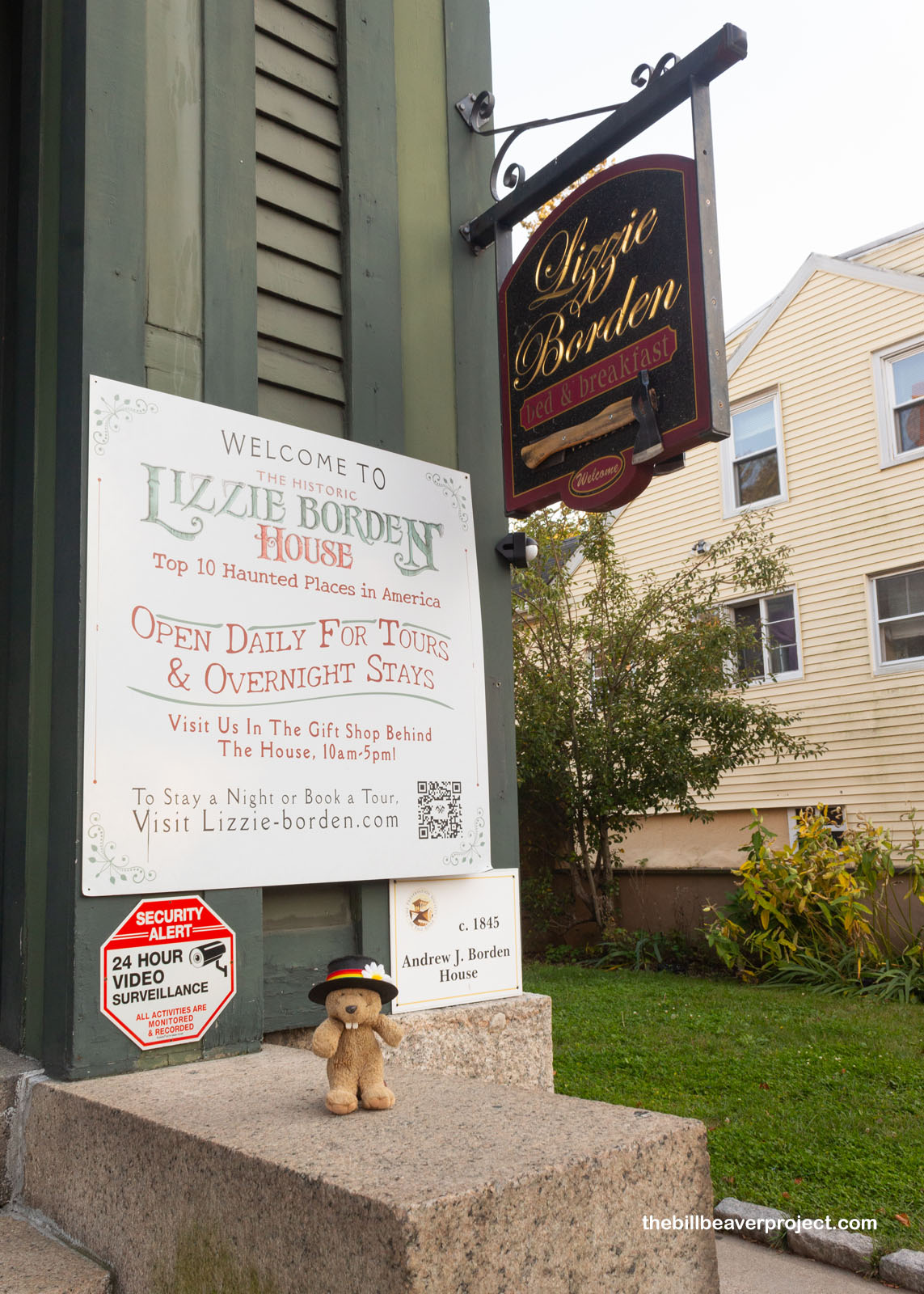 |
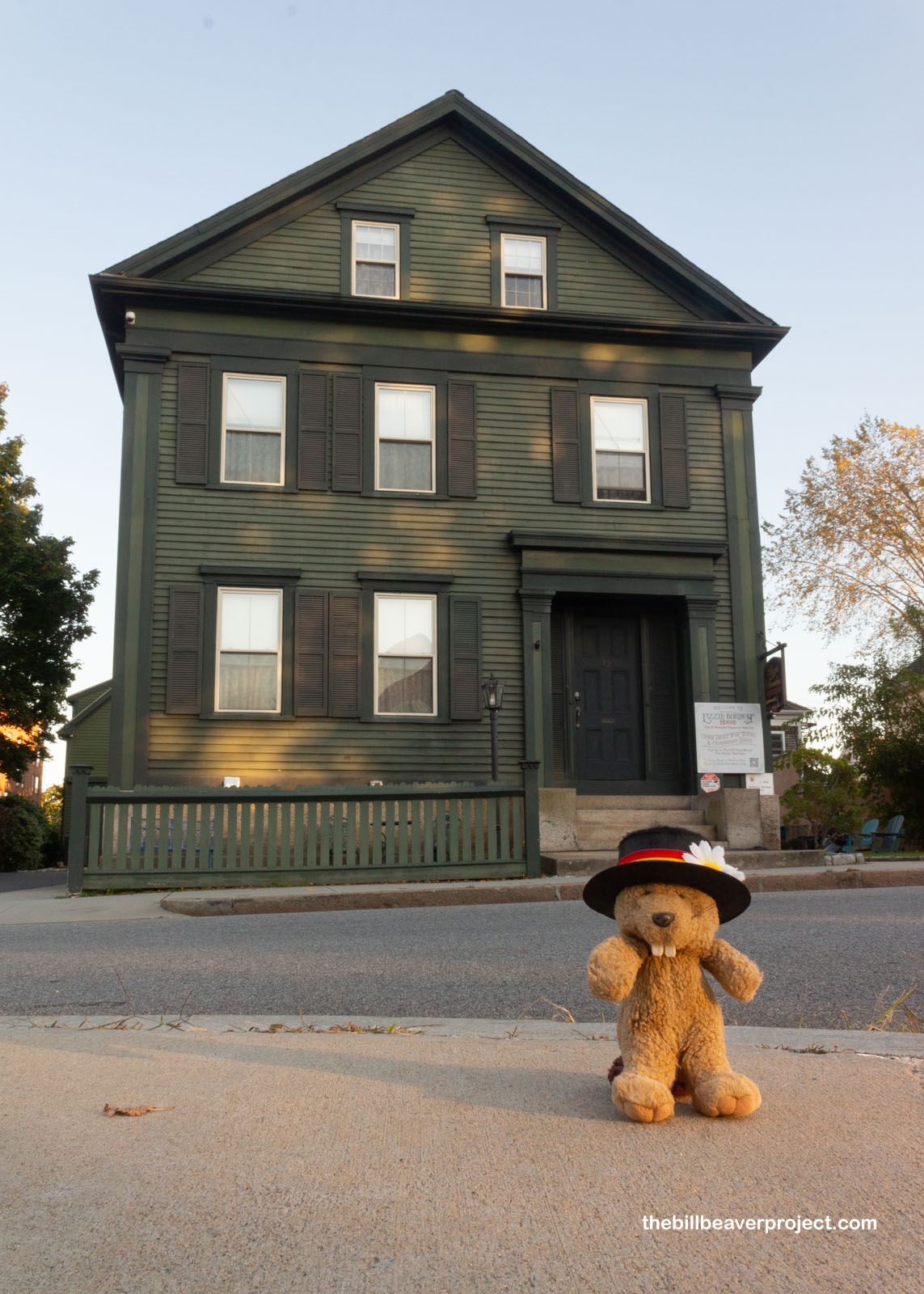 |
I wasn’t sure if the chill I felt was the story or the onset of nighttime, but either way, my adventure was done for the day. So many of today’s places bridged that line between fact and fancy that I had lots to think about on my way back to Waltham. Tomorrow should be a little more cut and dry, because I’ll be traveling into the strictly historical parts of the nation’s smallest state! You know which one that is, right?
Off to get forty winks (not forty knocks)!

 Previous Day |
Total Ground Covered: 299.8 mi (482.5 km) |
 Next Day |
